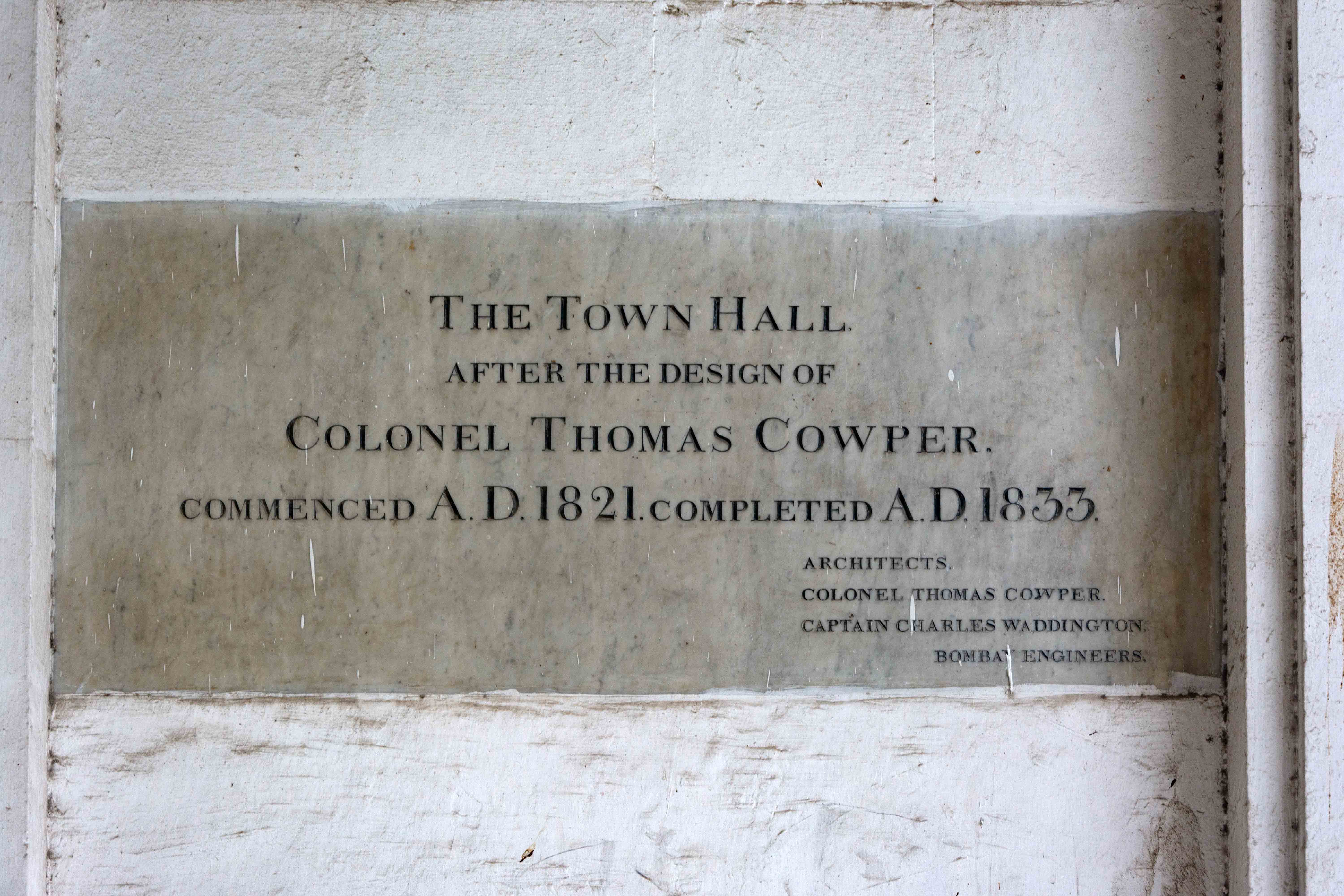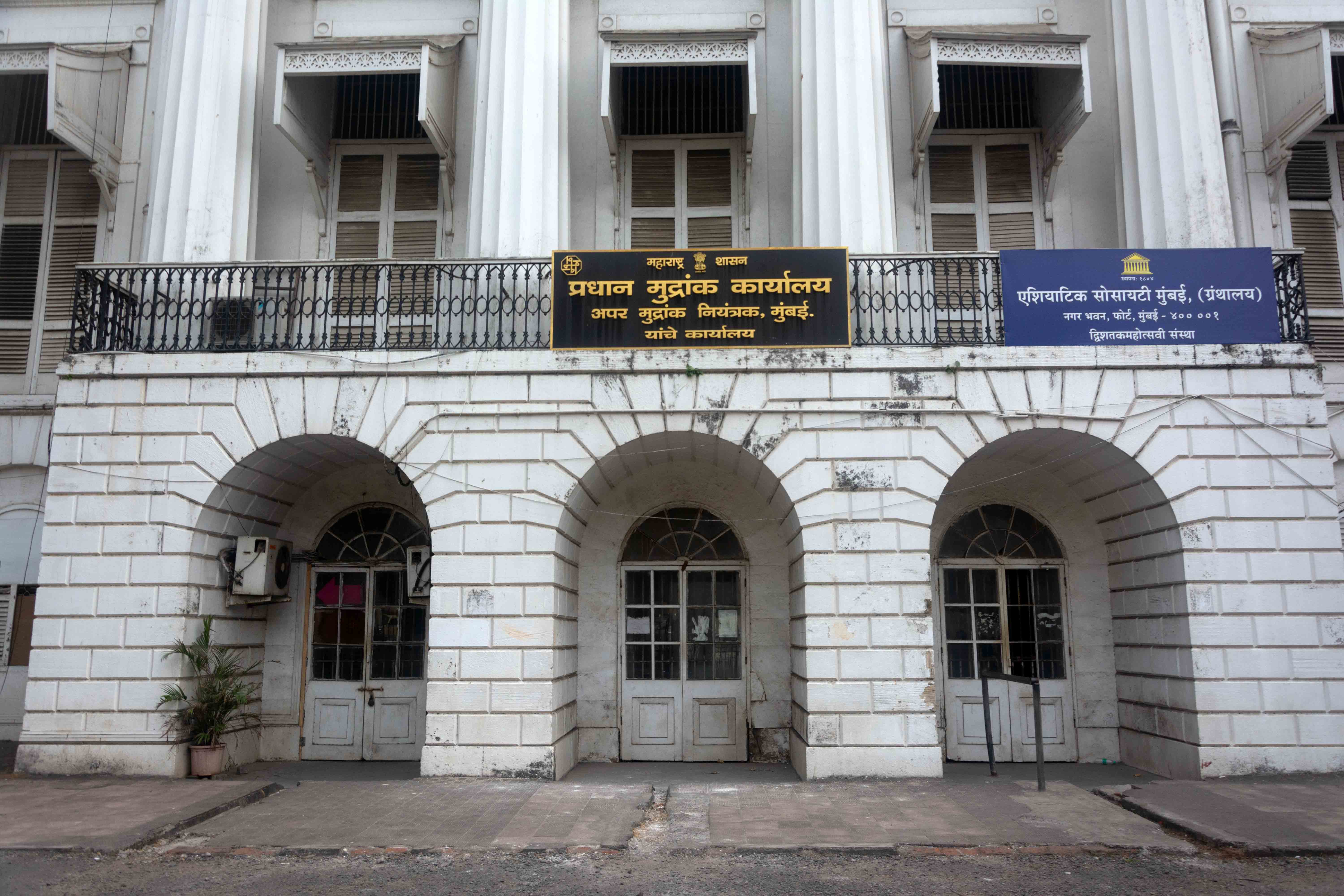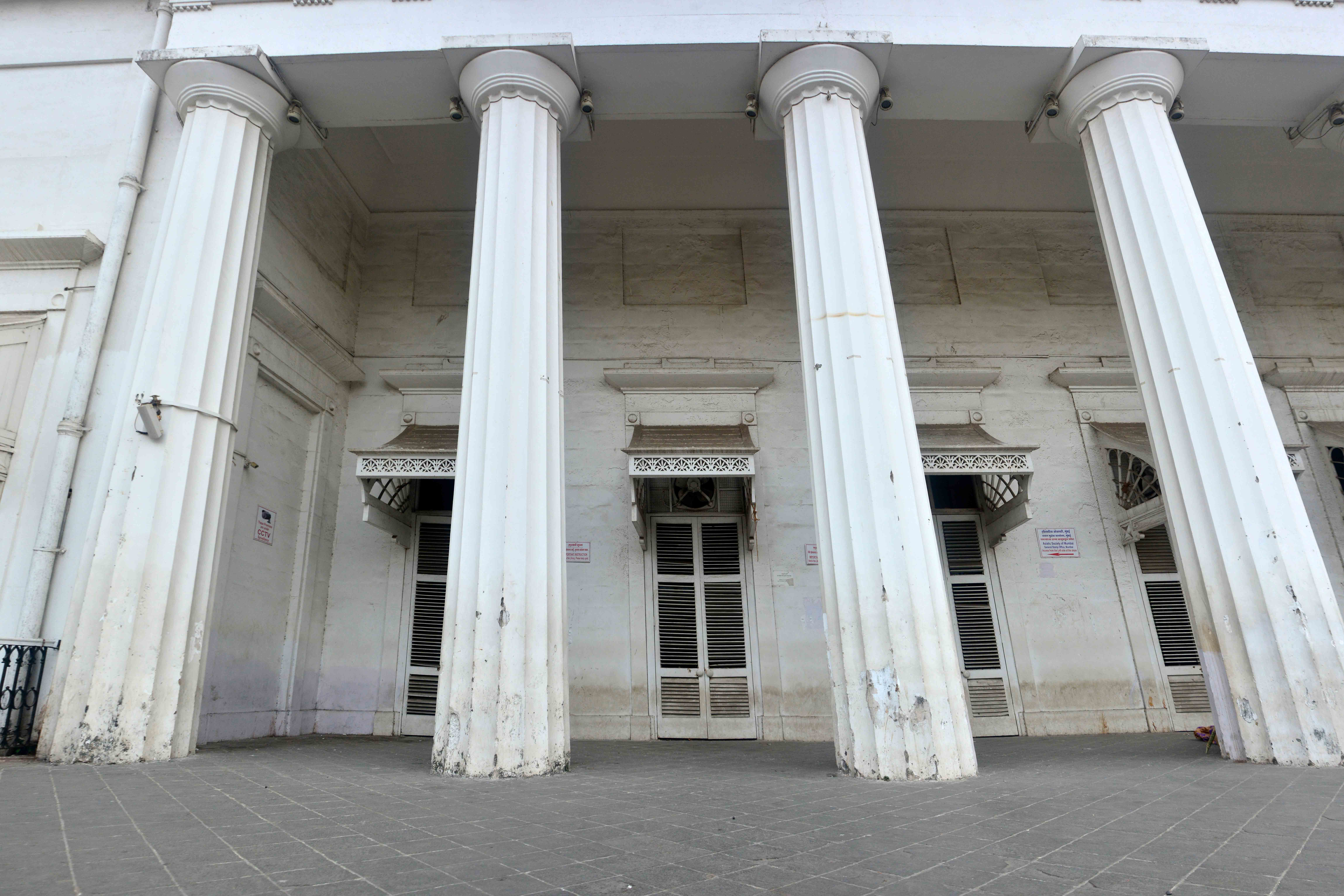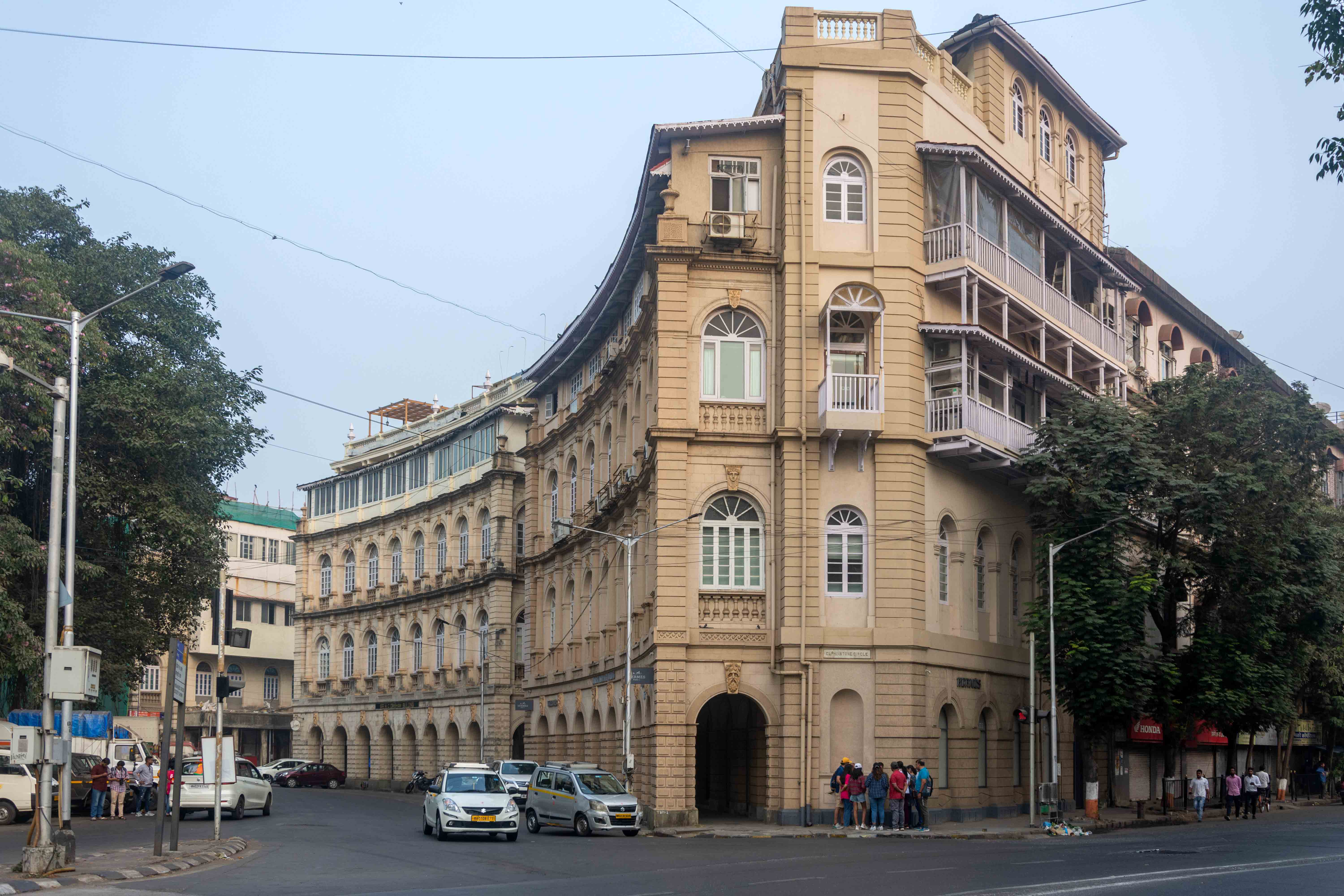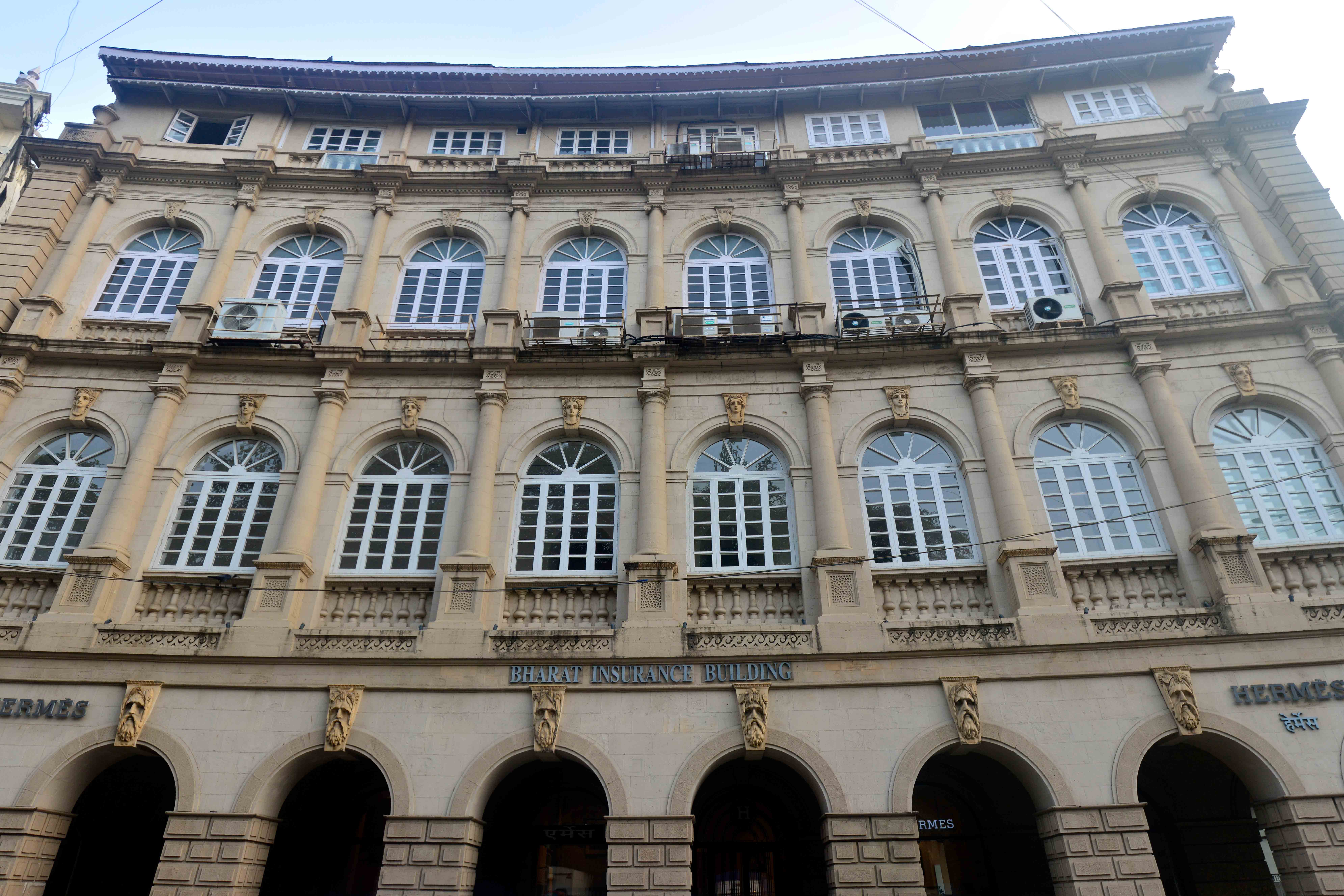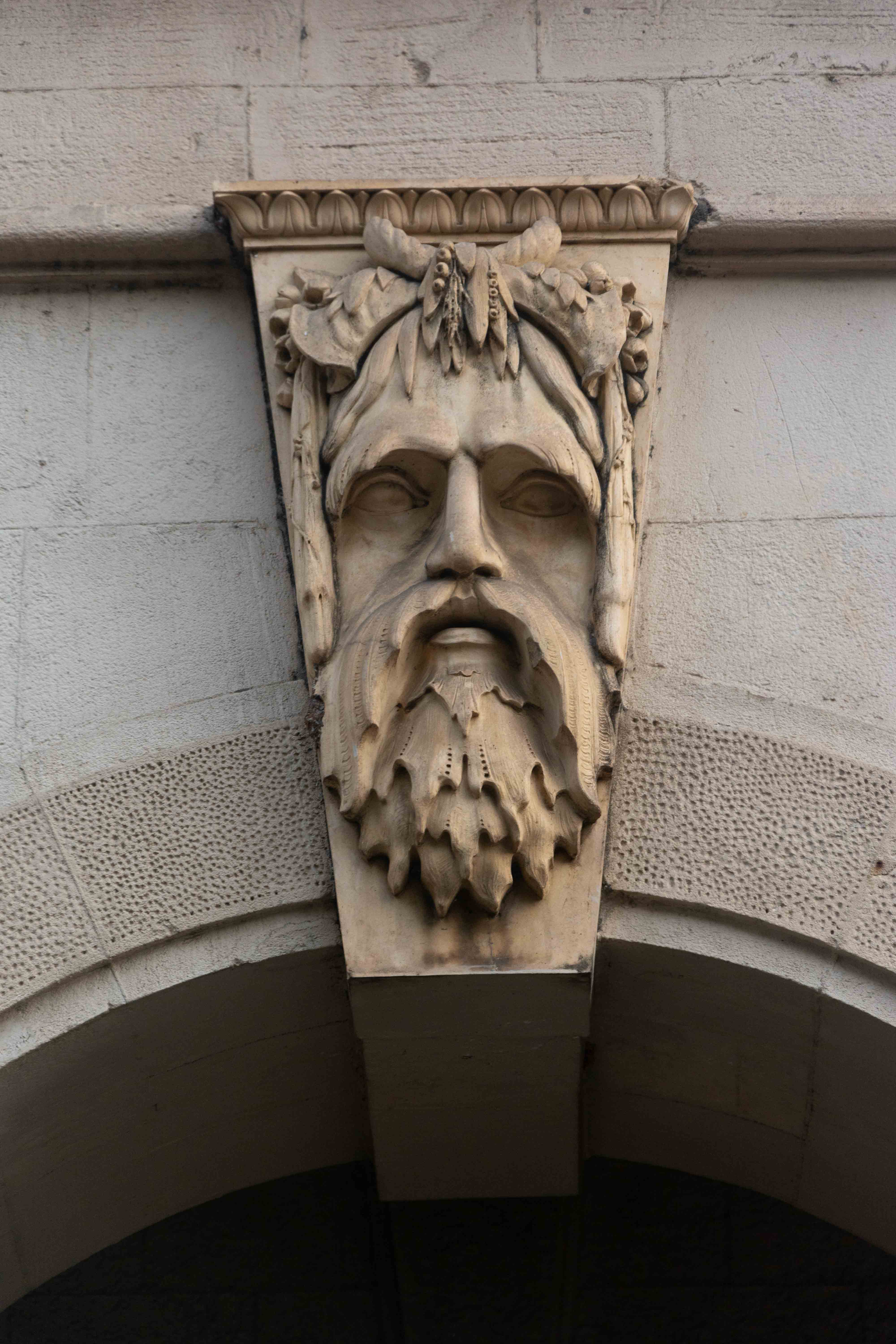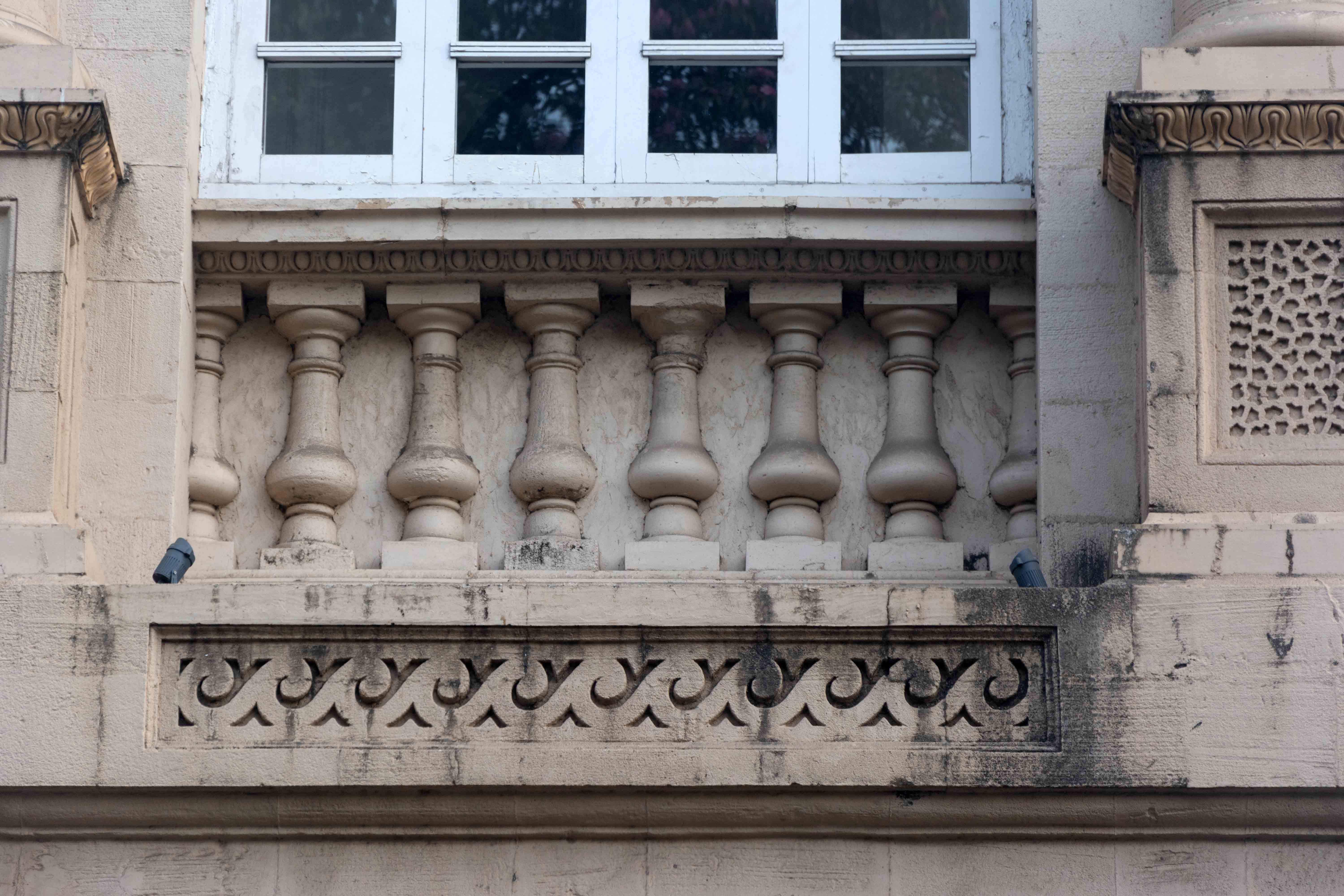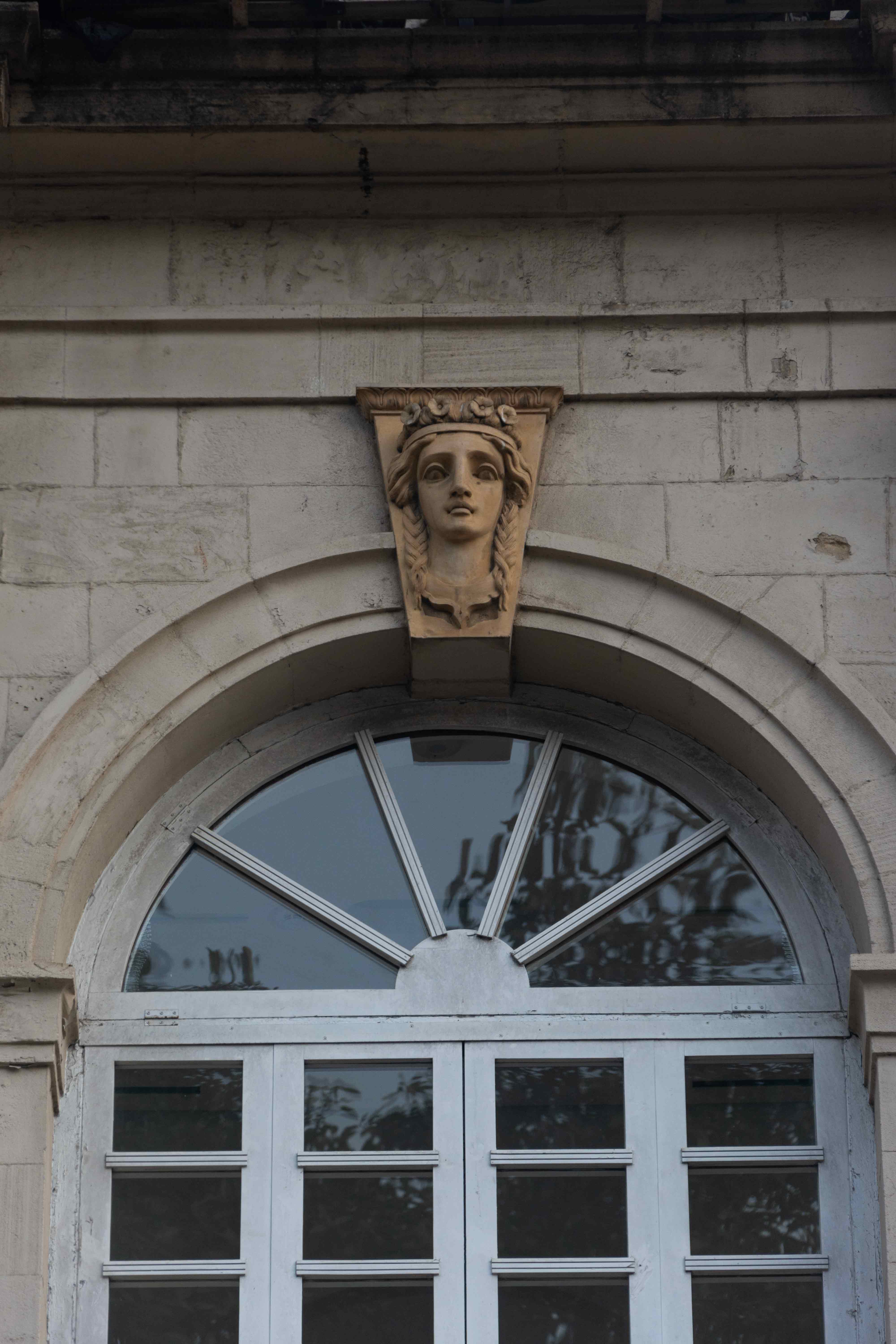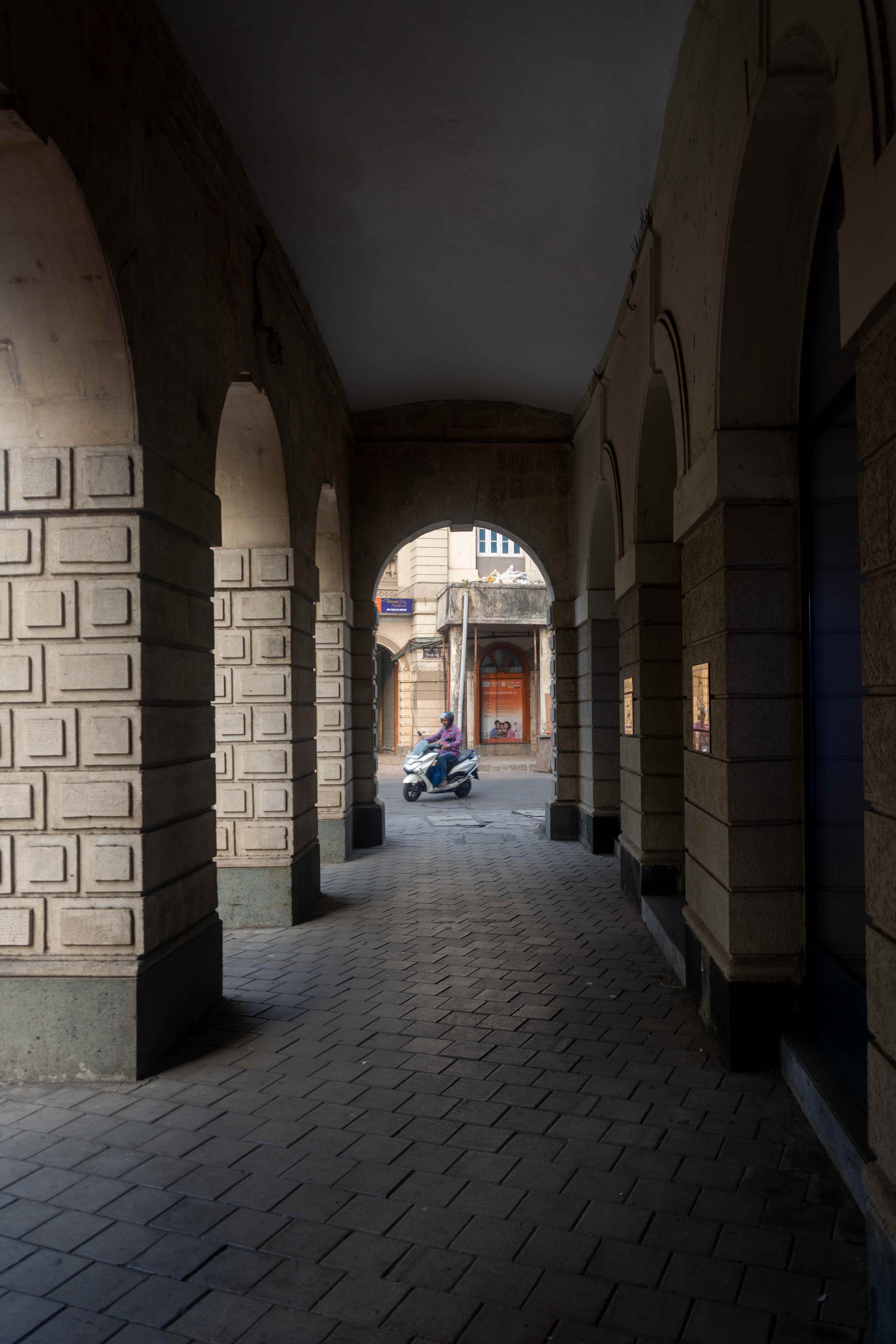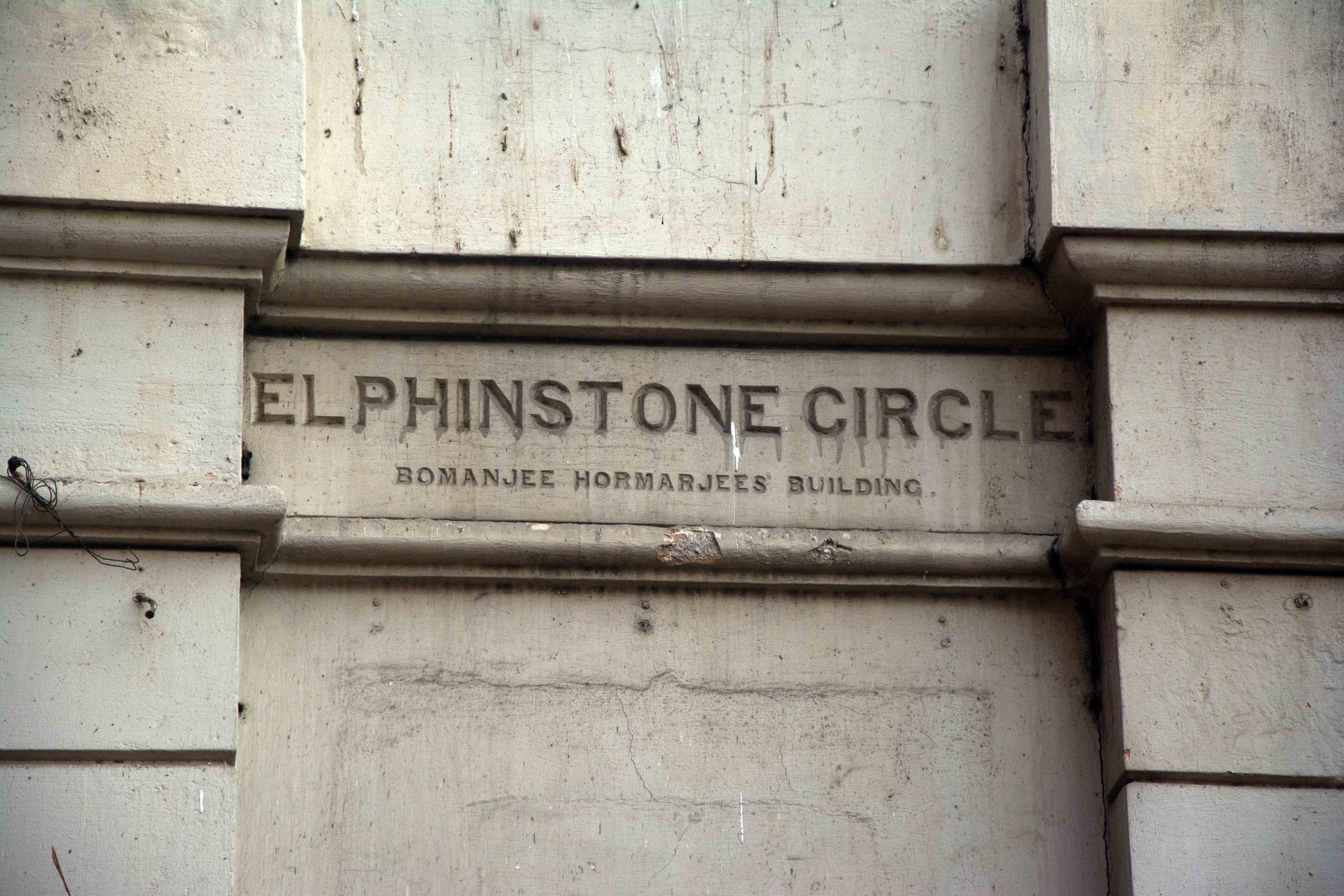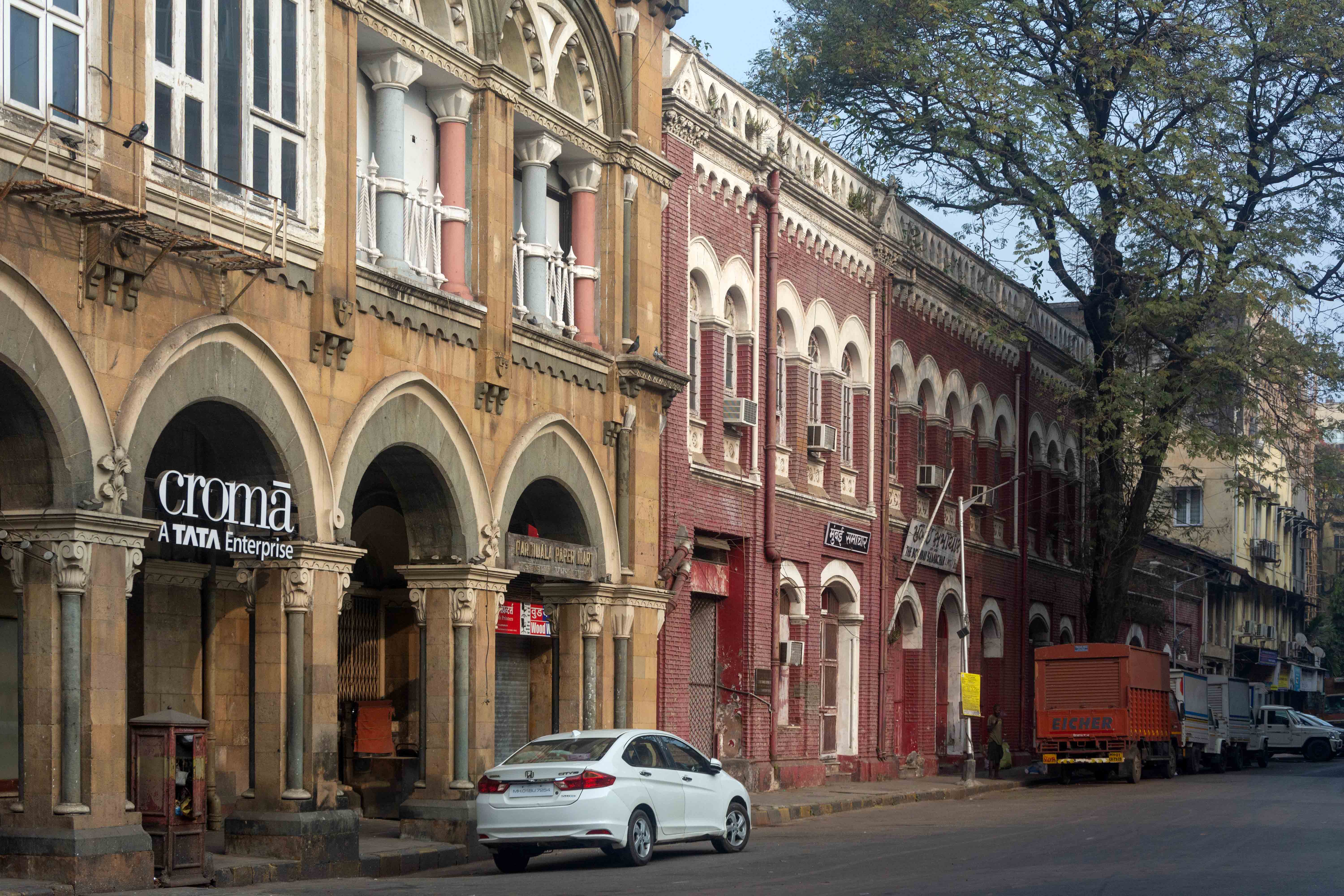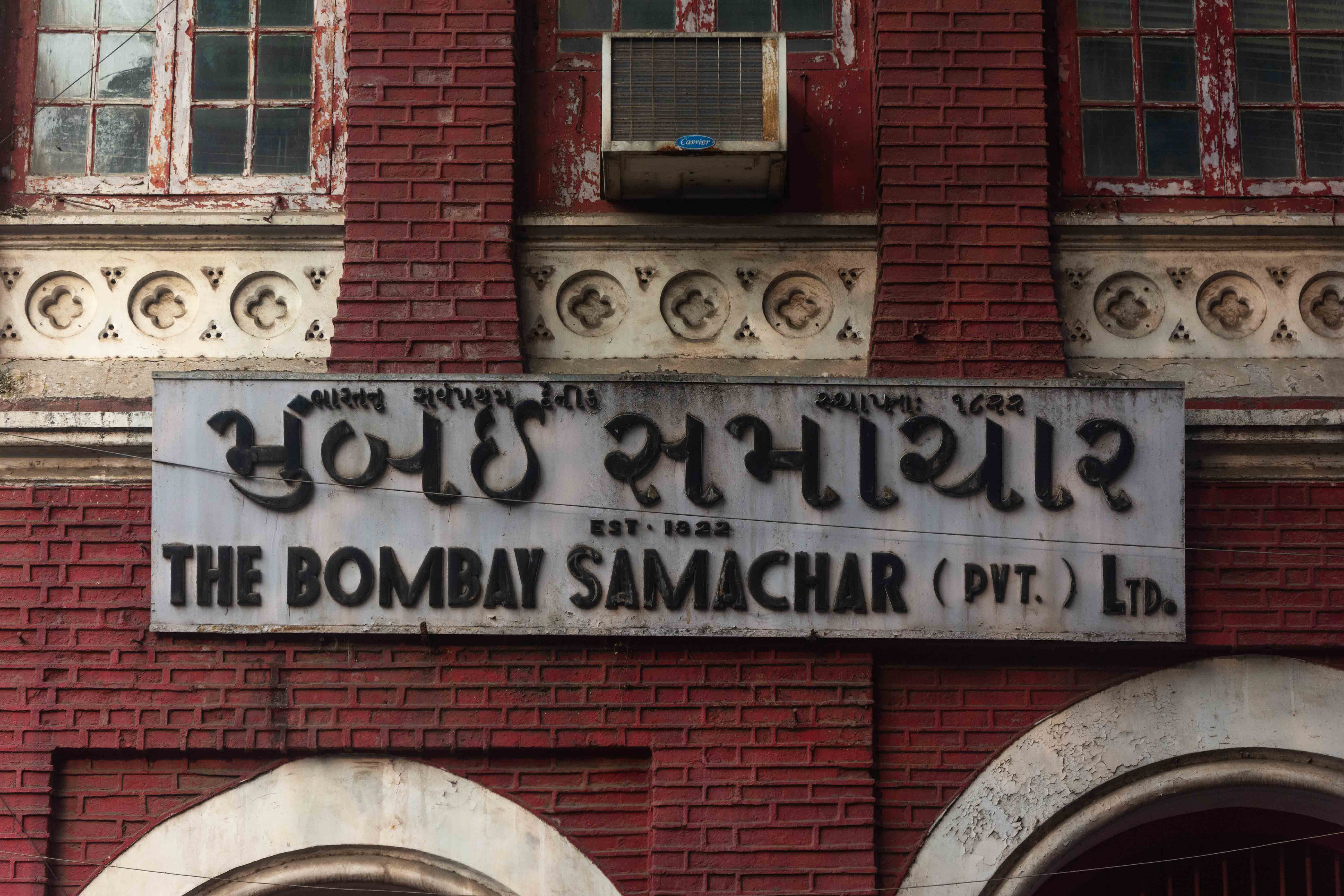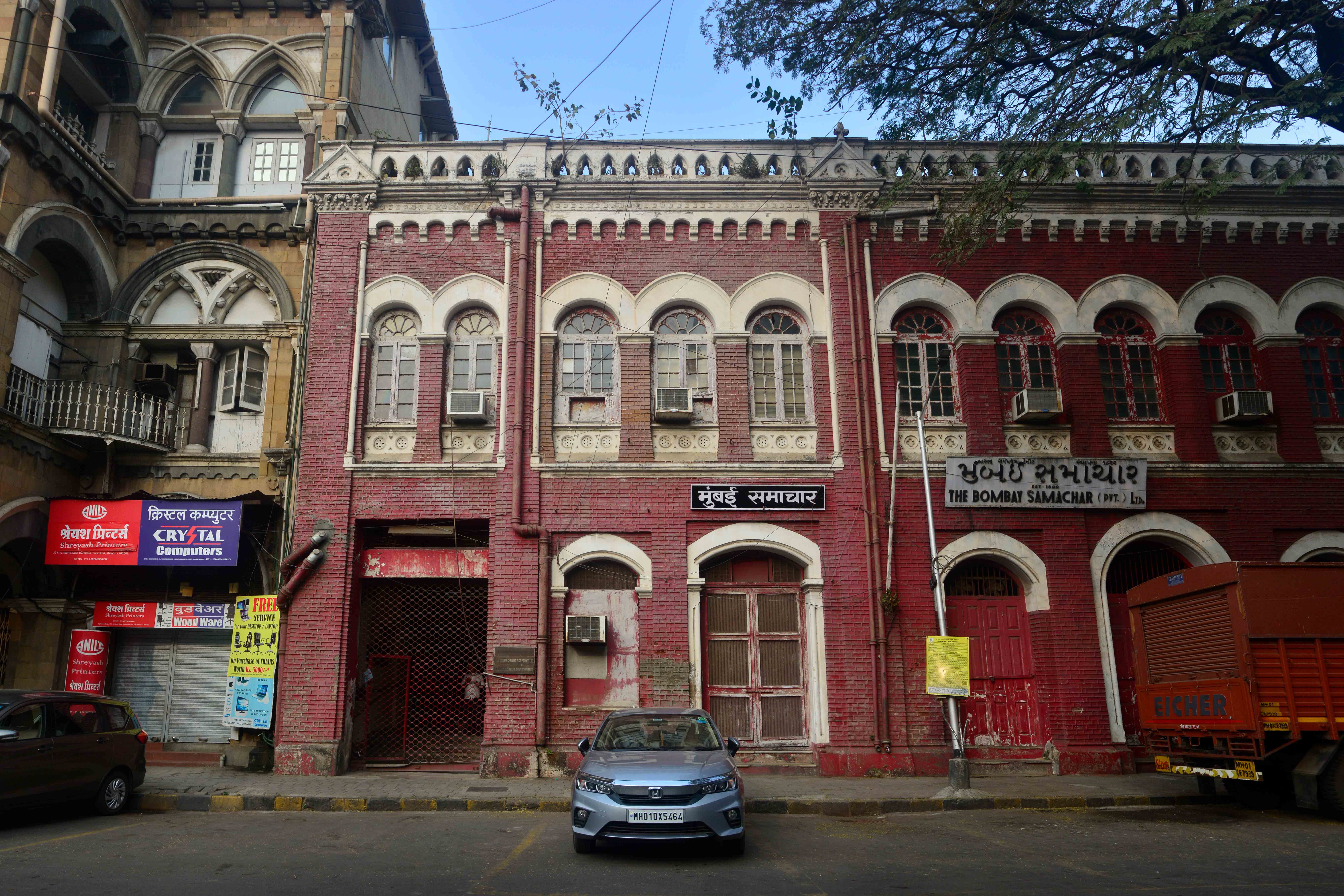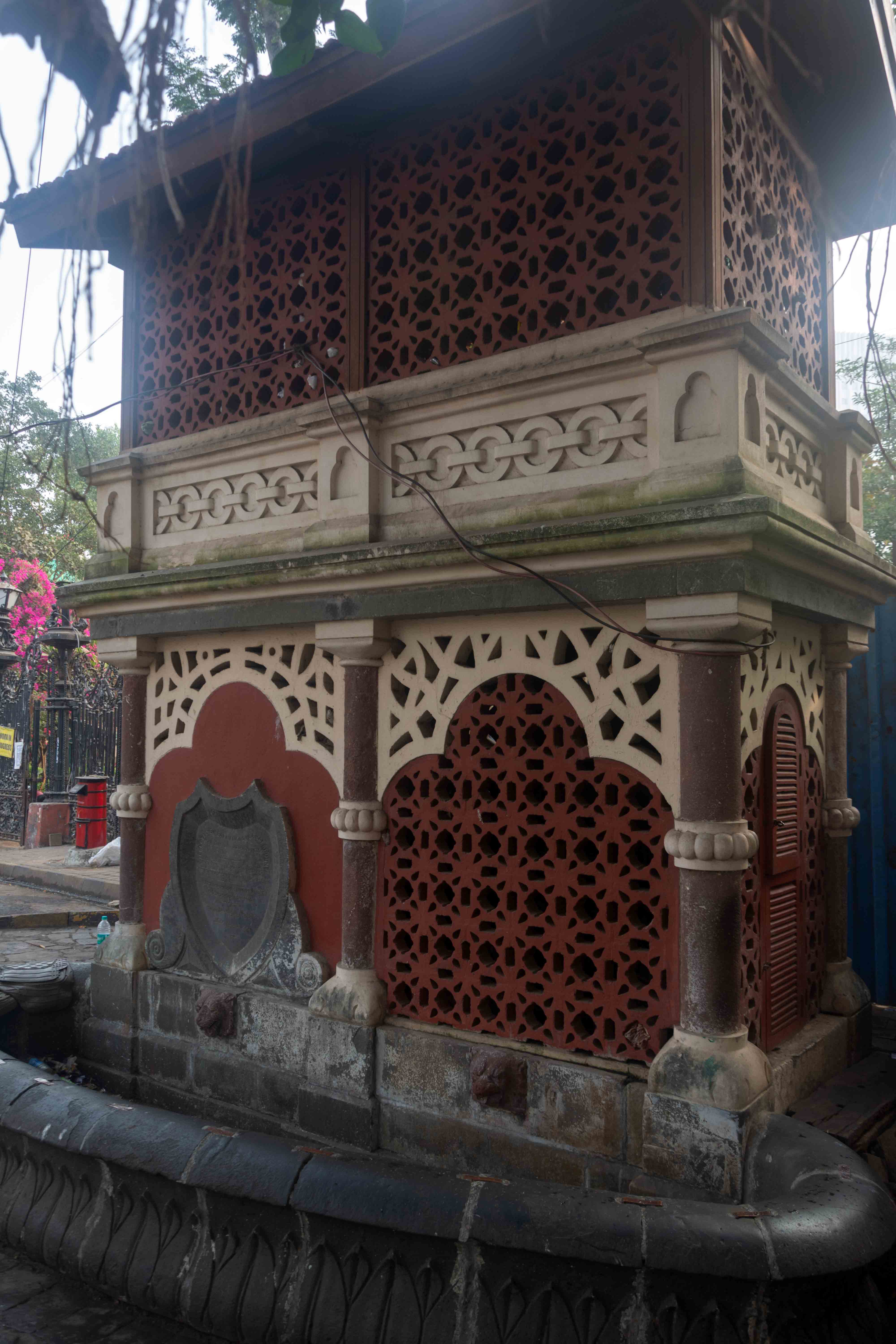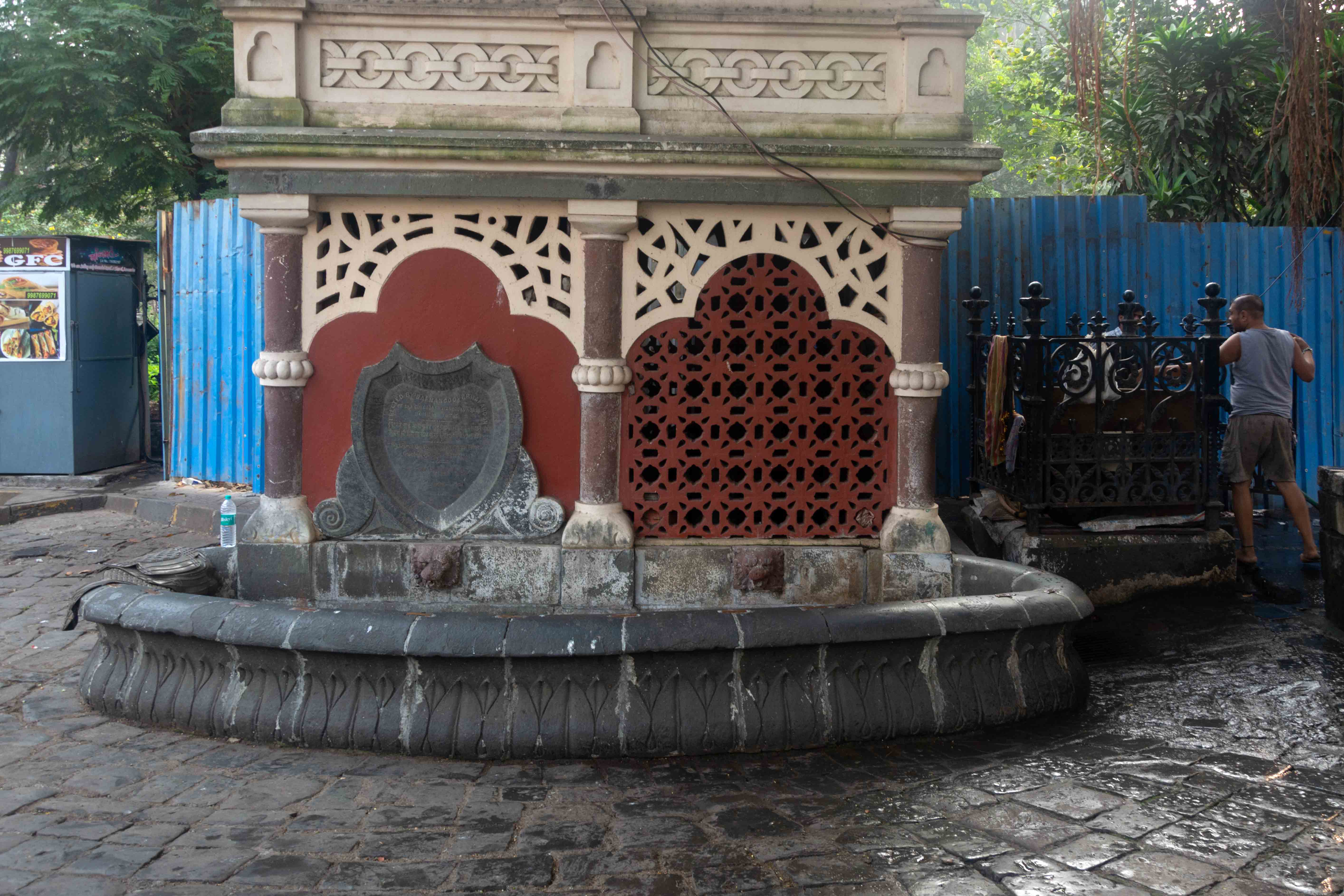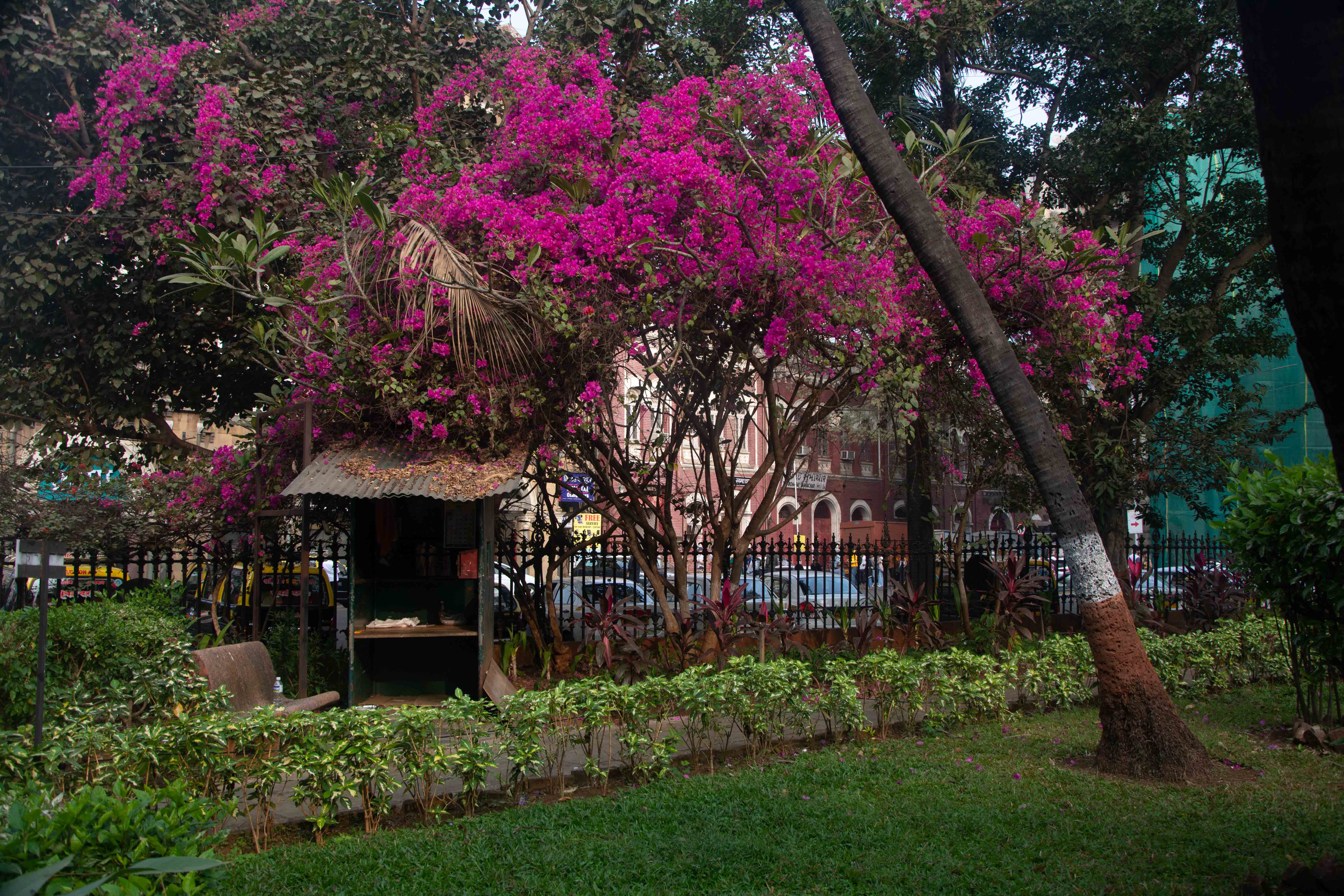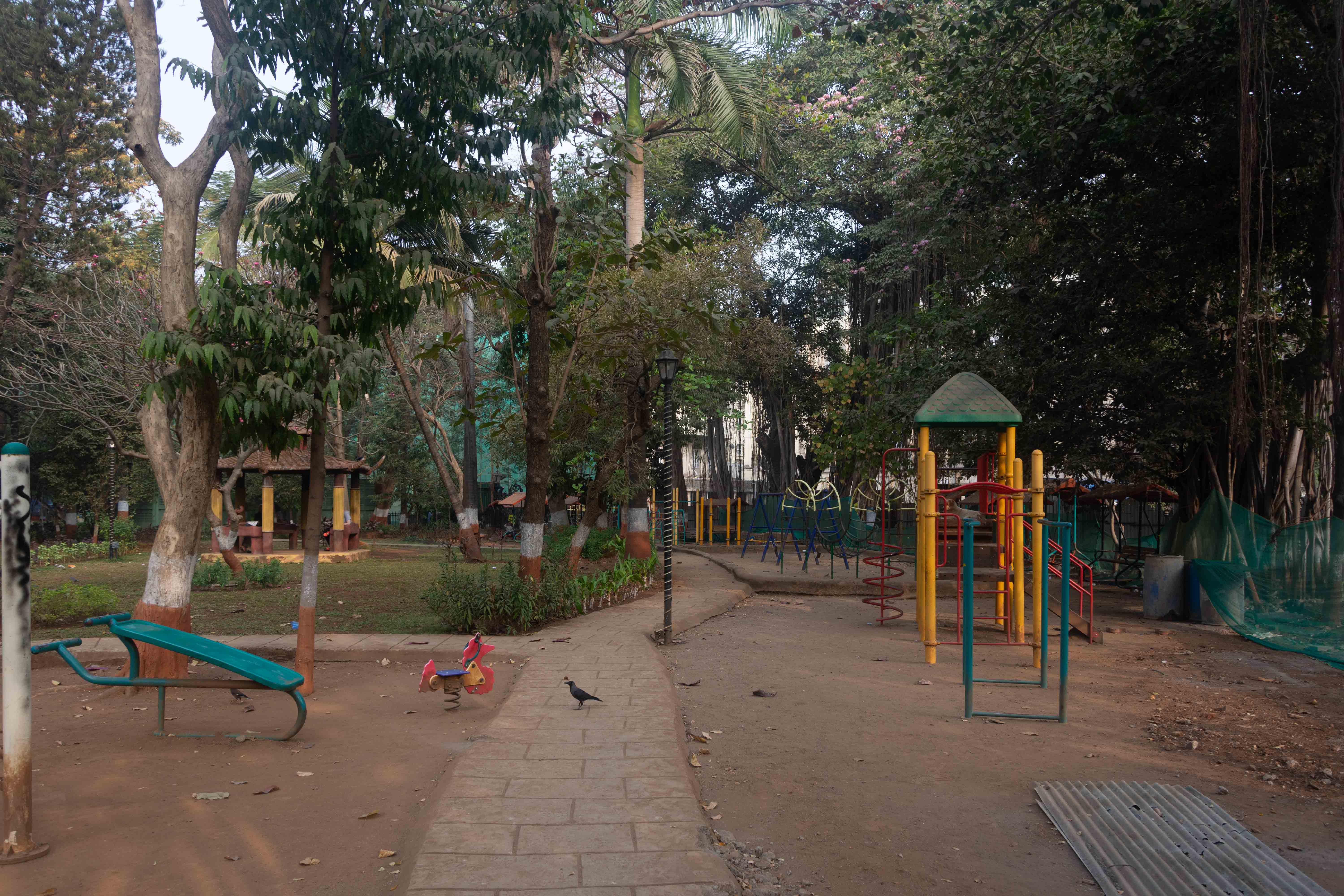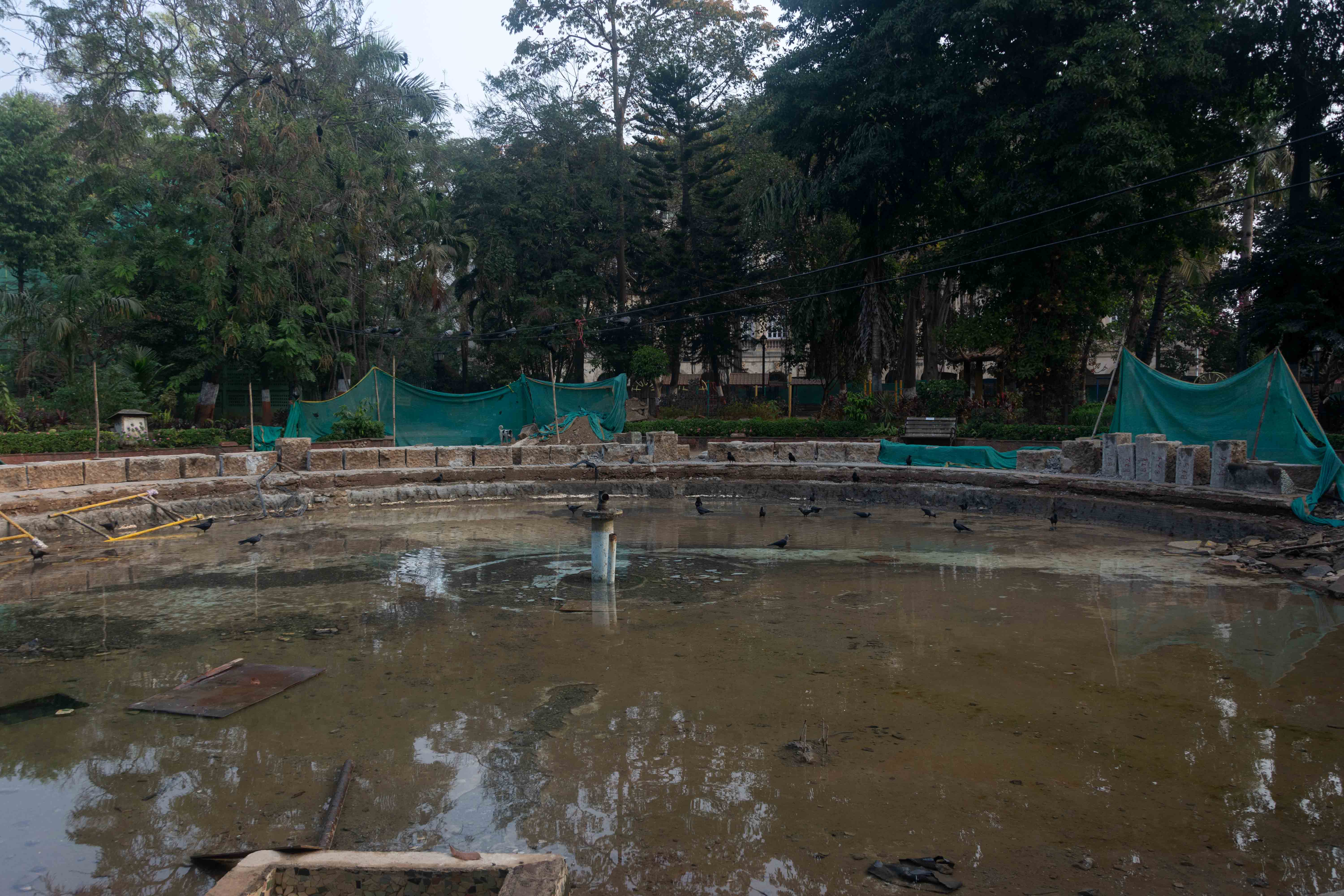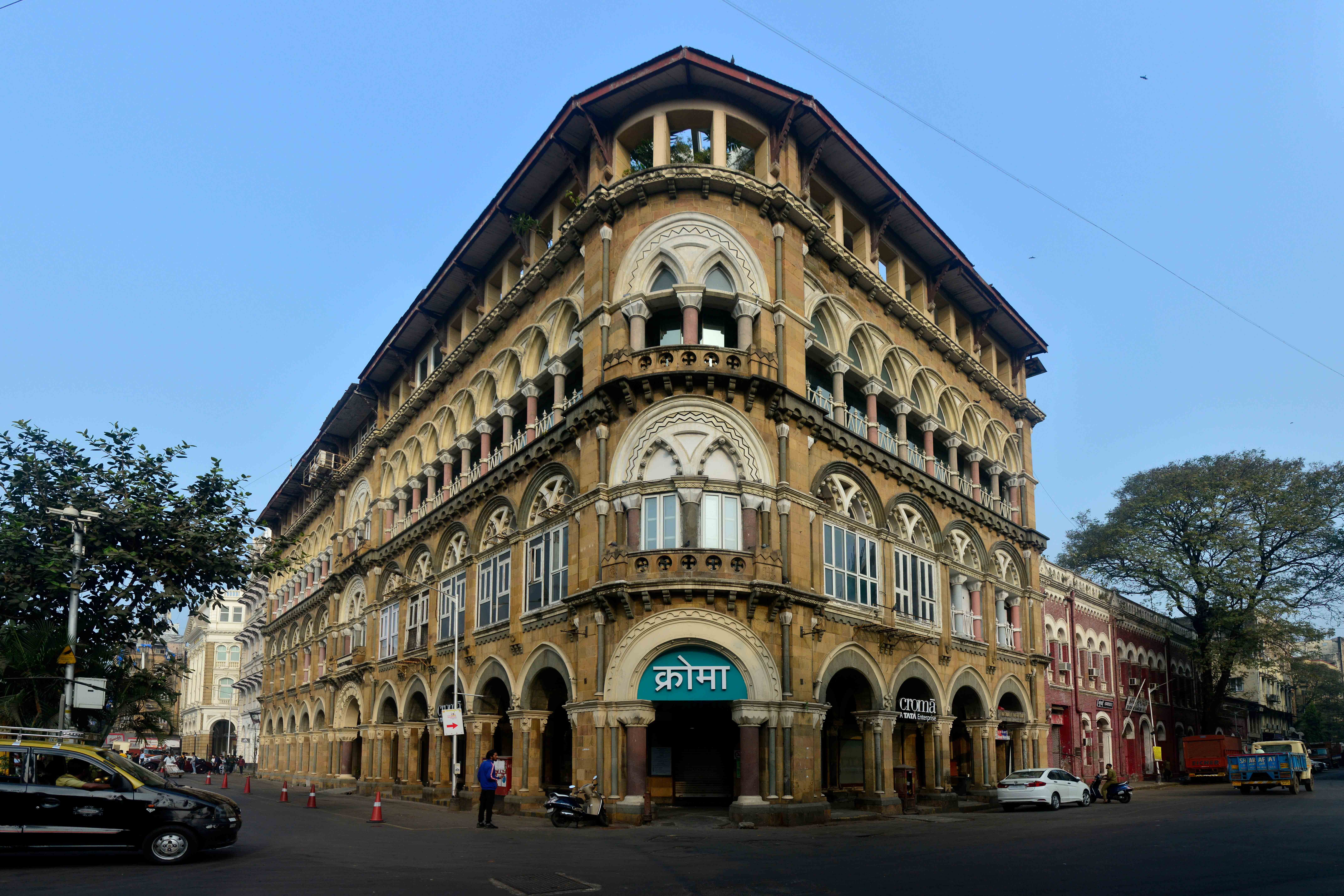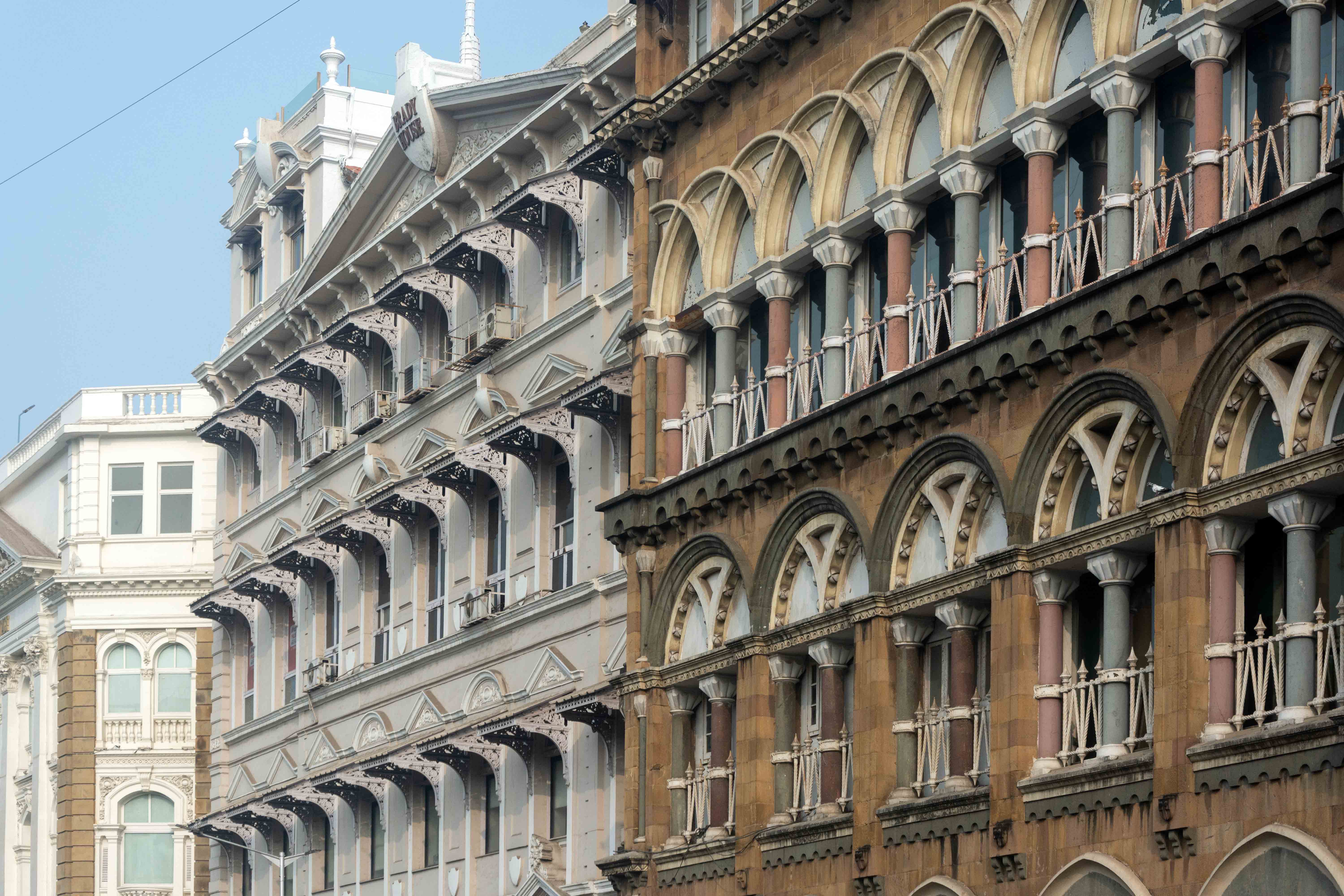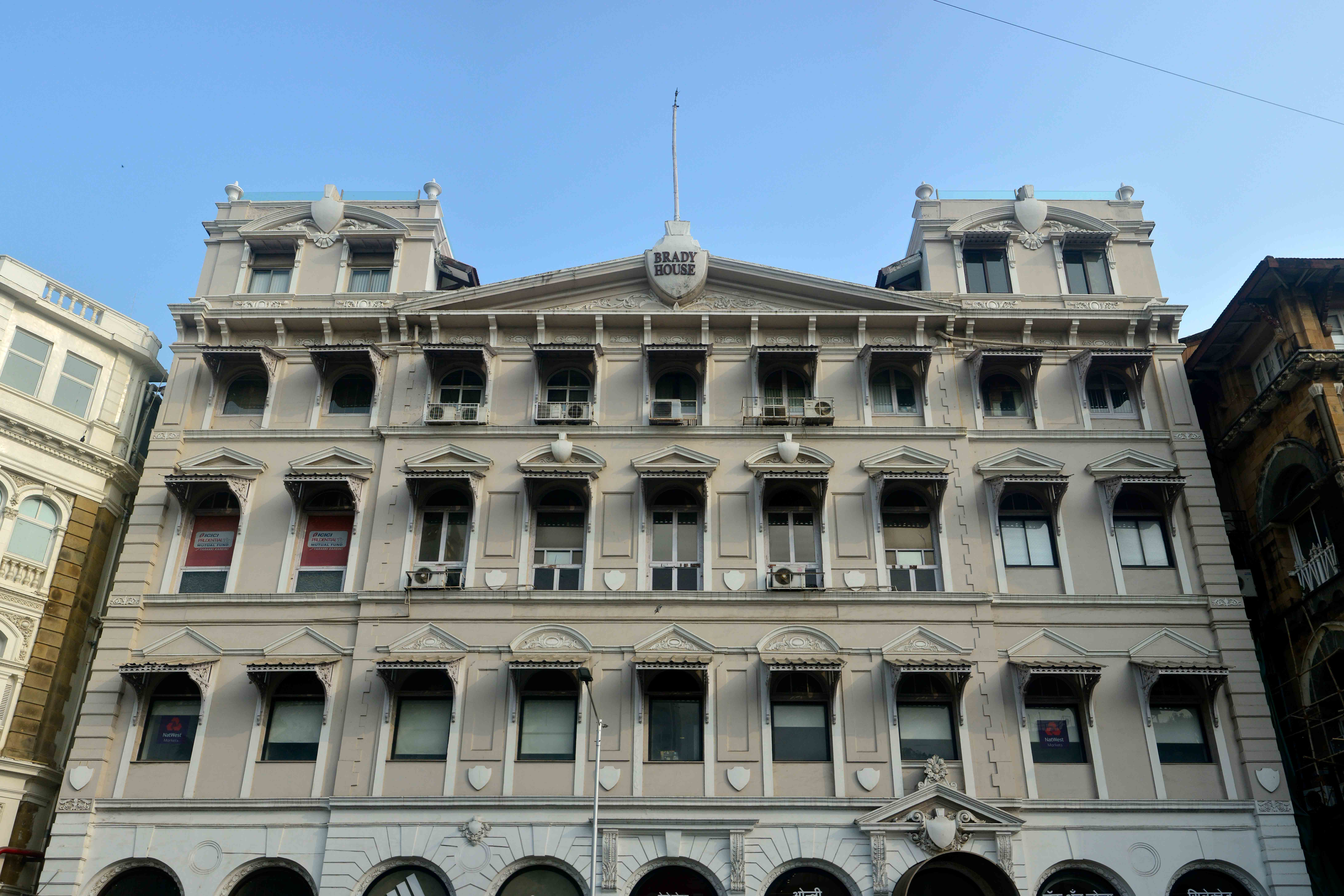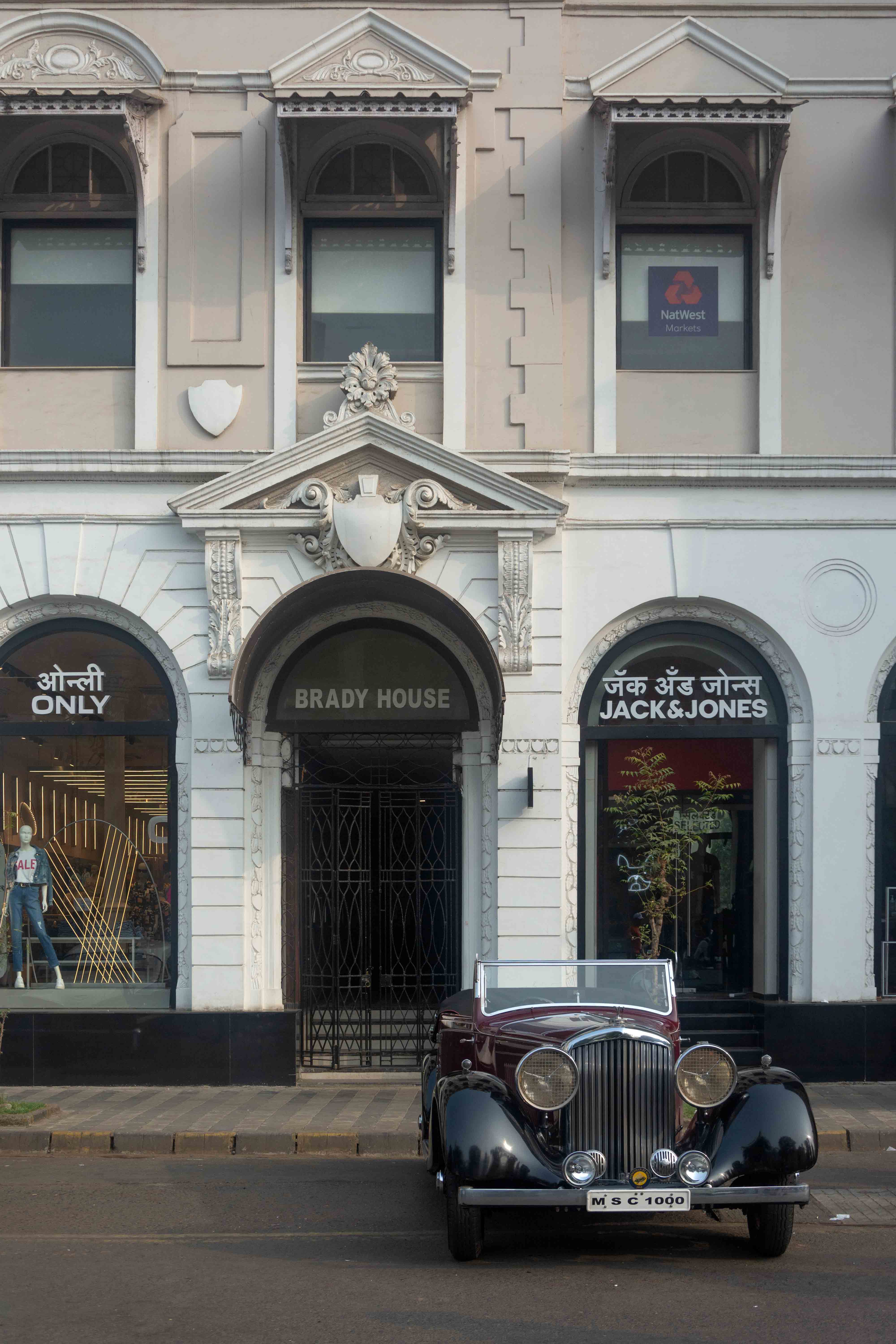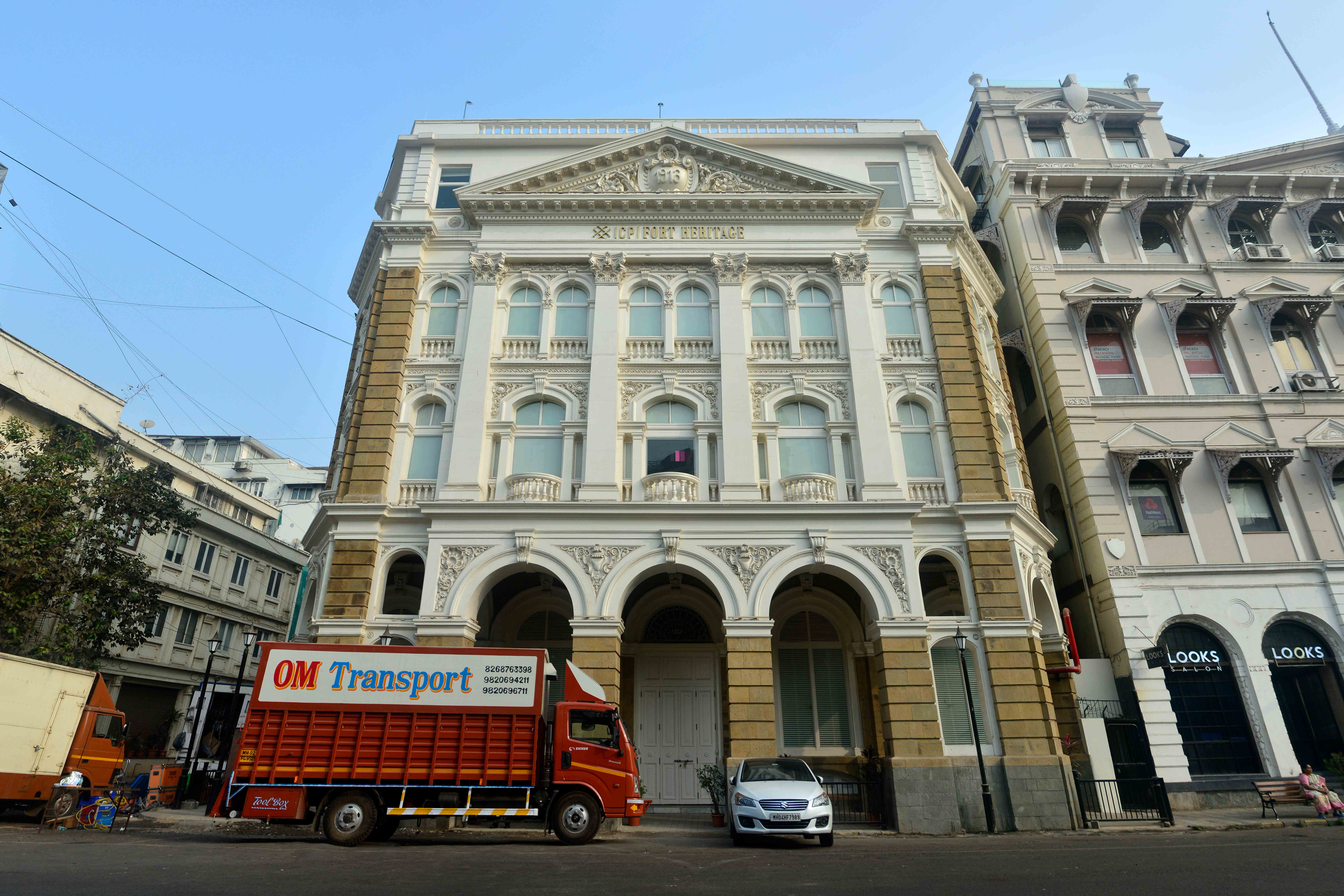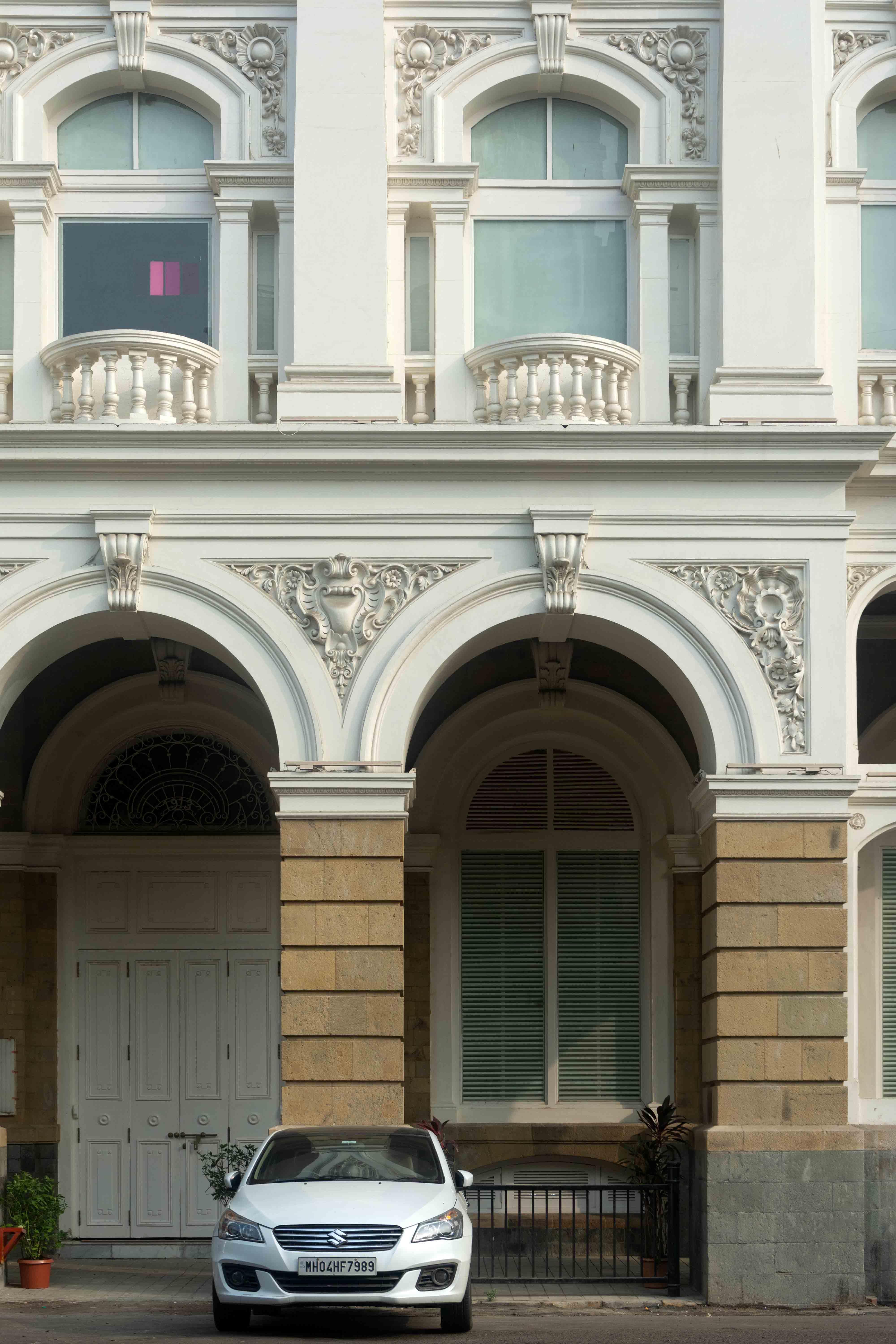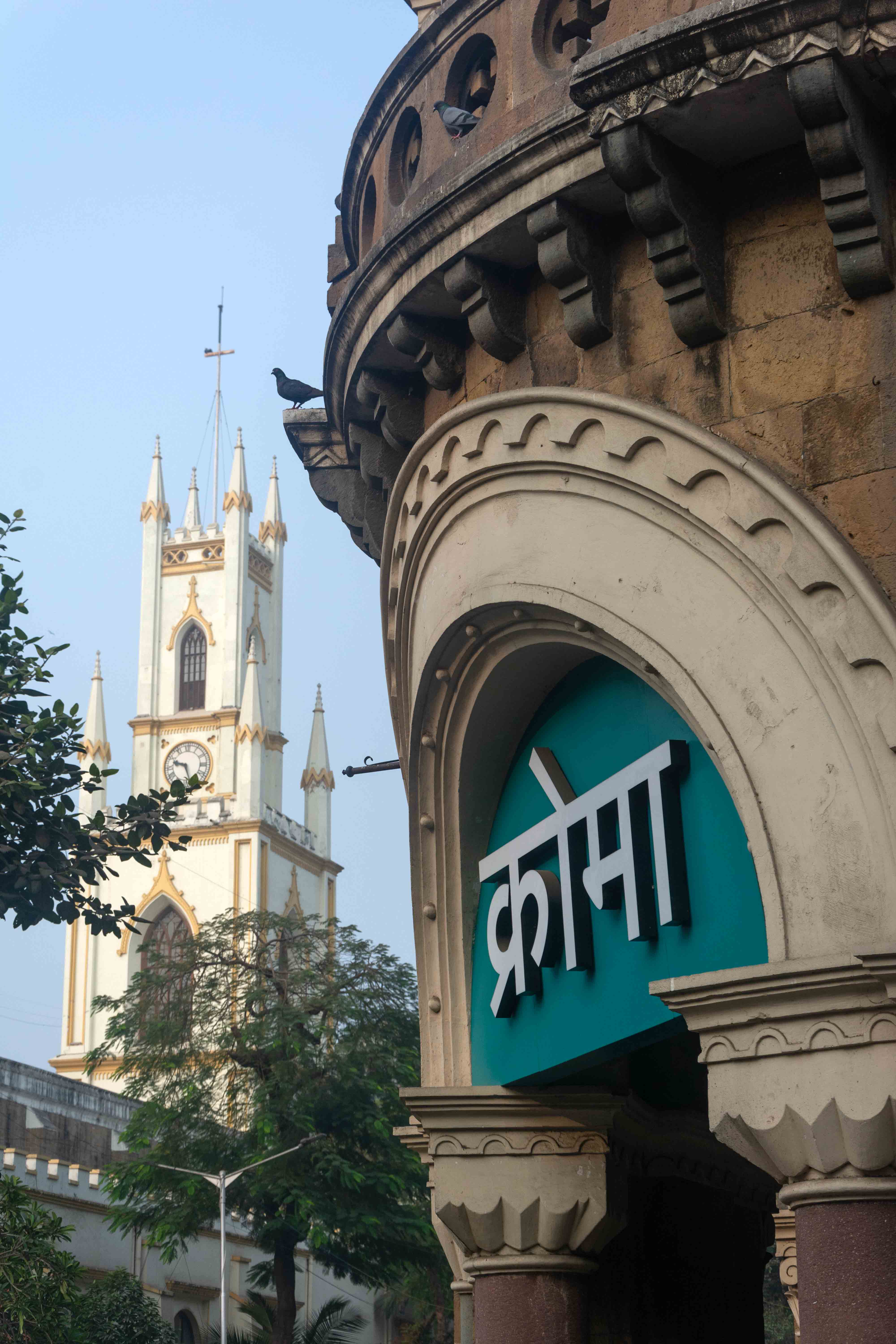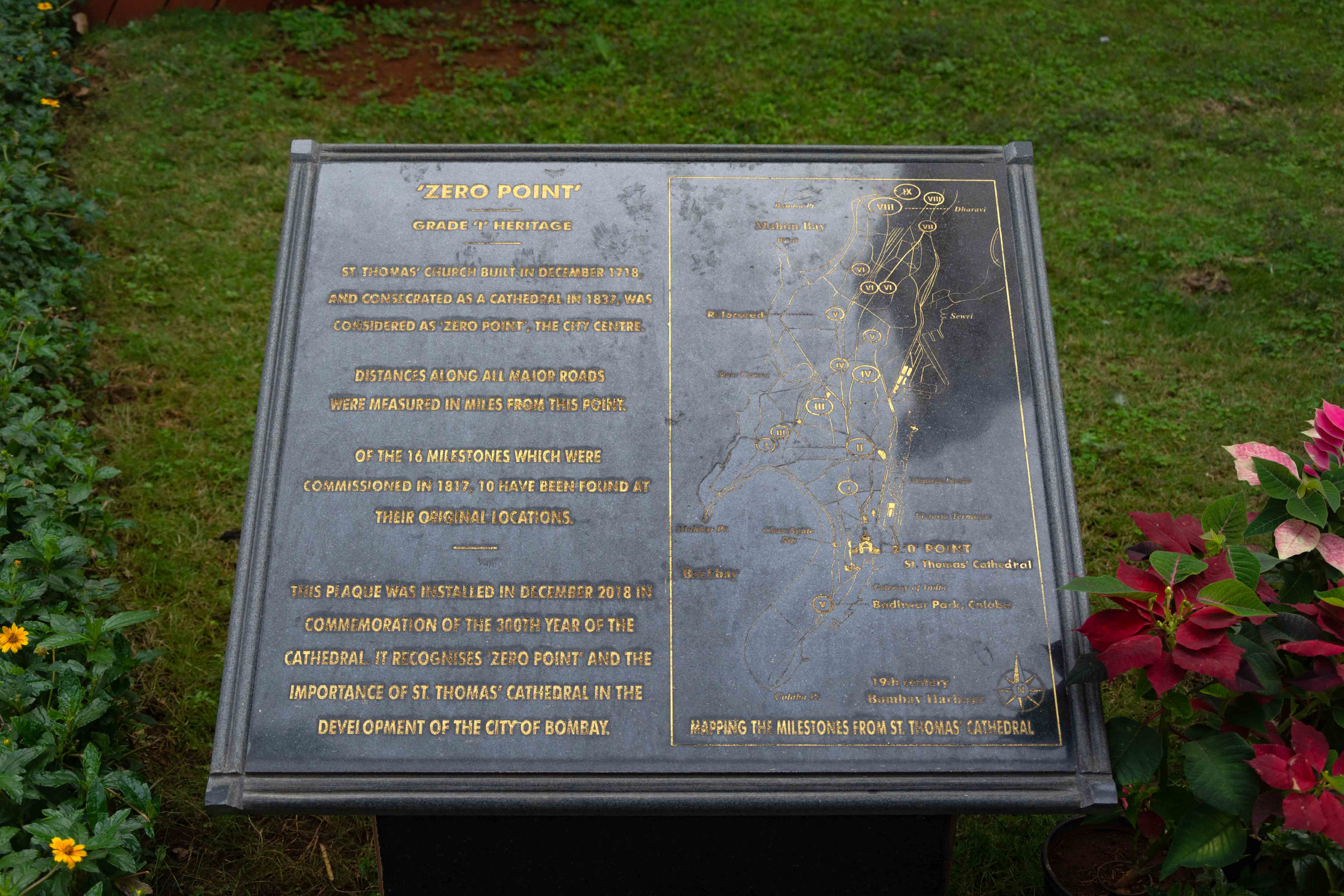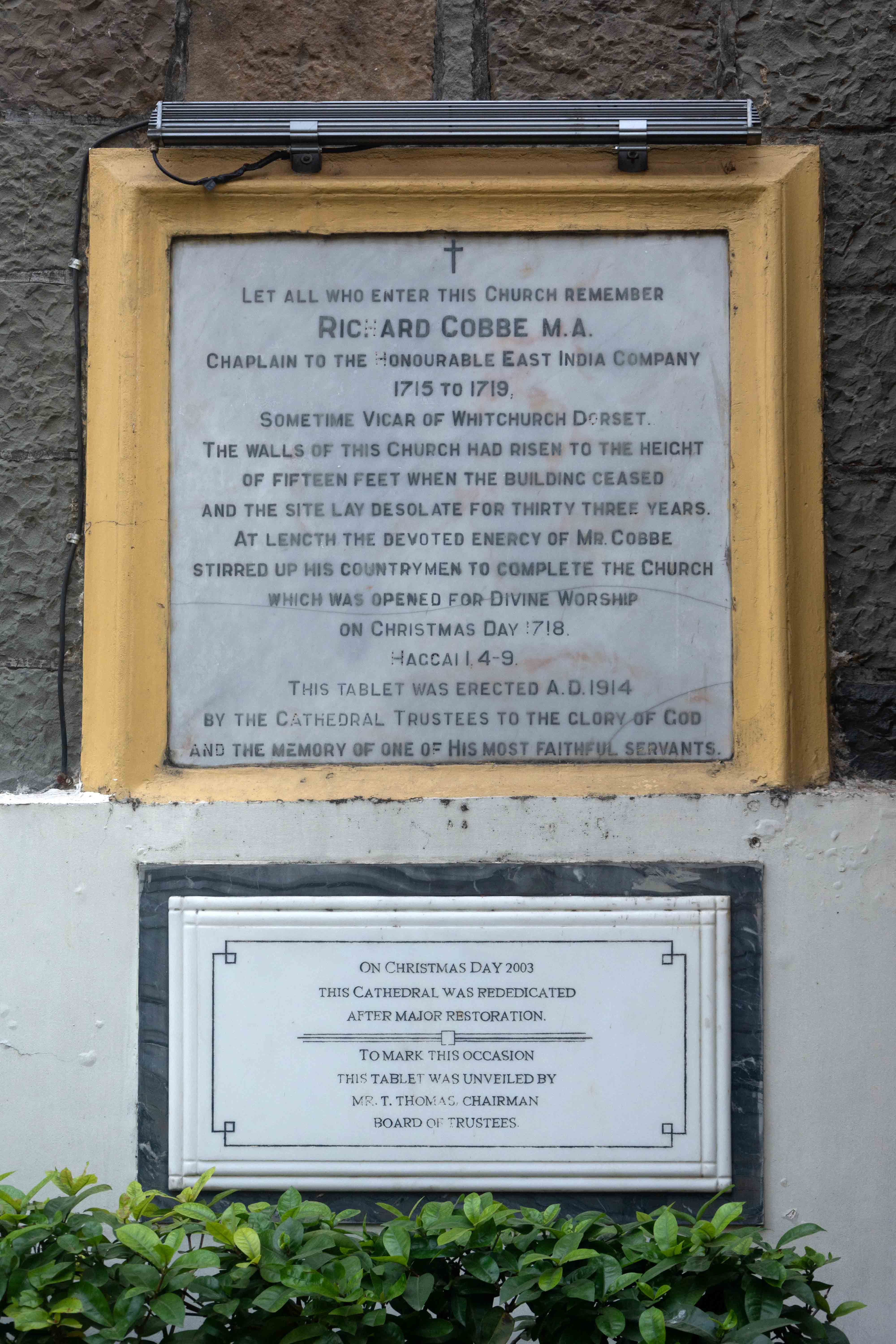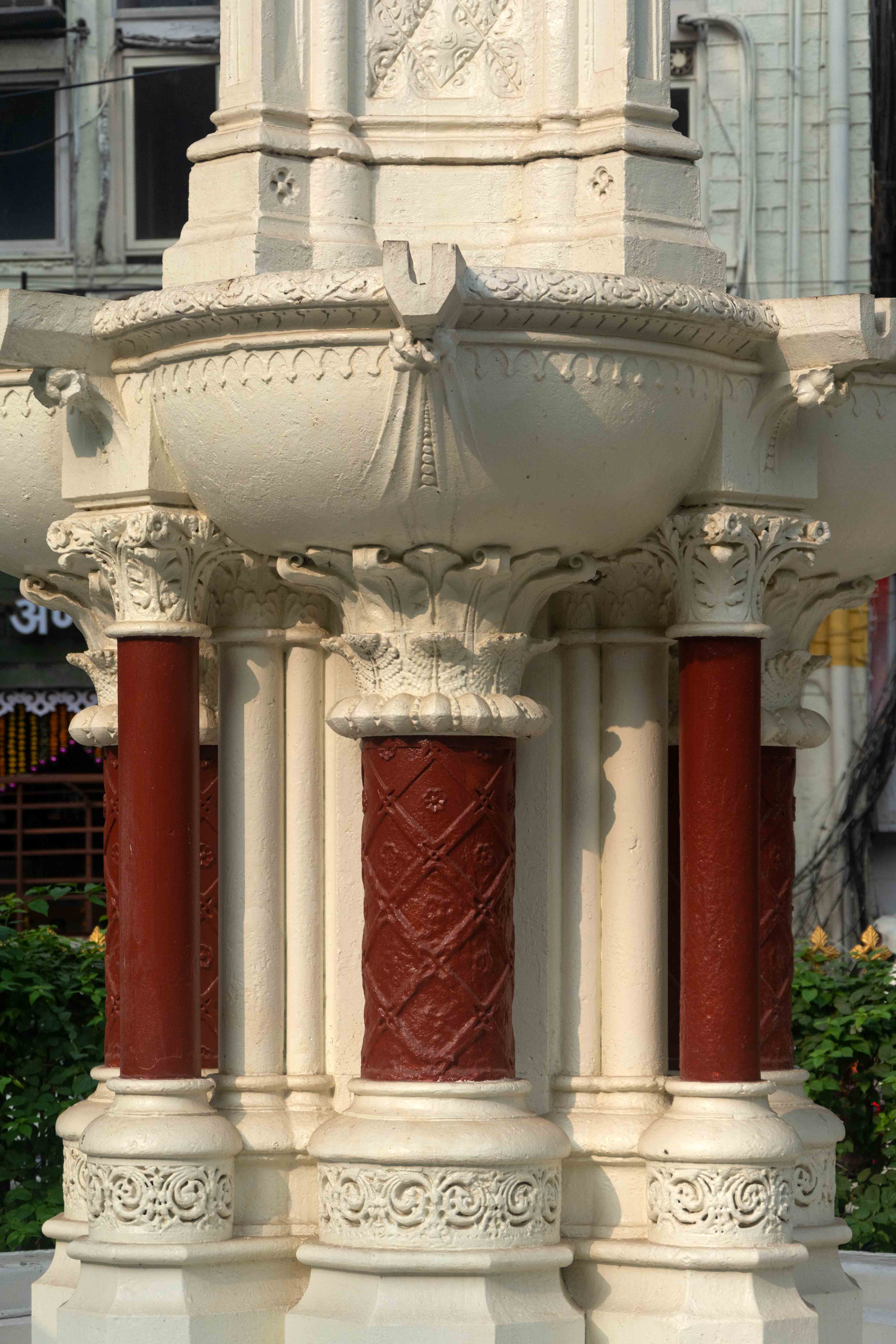In and Around Horniman Circle
The Horniman Circle, named after BG Horniman of Bombay Chronicle, began its journey as Bombay Green, an open space for recreation in colonial Bombay. This open space once spread from the old Secretariat and Government House on Apollo Street in the south to the entrance to Bazaar Gate Street on the north, the Town Hall building (Asiatic Society of Mumbai) to the east, and St Thomas' Cathedral on the west.
Bombay Green in the early 19th century became a significant centre of trading for cotton and opium. The Bombay Stock Exchange established its foundation in 1875 and later relocated to its current location on Dalal Street. Bombay Green also became a popular subject in paintings and photography. Following the demolition of the fort walls, authorities demarcated the area around Green into two distinct areas: a central circular garden, envisioned as a purely recreational space, and a surrounding semi-circular line of buildings, designated for trade and commerce.
After independence, Mr. B.G. Horniman, the first editor of the Bombay Chronicle, inspired the renaming of the Elphinstone Circle to Horniman Circle. Sir Pherozeshah Mehta, a founding member and former President of the Indian National Congress, started the Bombay Chronicle in 1910 as a nationalist alternative to the Times of India.
Asiatic Society, located at Town Hall
Horniman Circle was built in front of the Town Hall on a large open space known as the Bombay Green. In the 1830s, it became the premises of the Asiatic Society, Mumbai. The Society was formed in 1804, by Scotsman Sir James Mackintosh, and aimed at “promoting useful knowledge, particularly as it's now immediately connected with India.”
Commemorative plaque at the Town Hall
There is a commemorative plaque at Town Hall, dedicated to Colonel Thomas Cowper and Captain Charles Waddington of the Bombay Engineers. The construction began in 1821, but the original architect, Thomas Cowper, passed away in the middle, leaving Major John Hawkins to complete the remaining building in 1833.
Department of Registration and Stamps (Govt. of Mumbai)
In addition to the Asiatic Society, the Town Hall also houses the Department of Registration and Stamps (Government of Mumbai). It also houses the head office of the Directorate of Libraries (Maharashtra State), which runs the State Central Library, located inside the Town Hall.
Doric Pillars at Asiatic Society
Eight columns of the Doric order support the western entrance to Town Hall. The Doric order was one of three orders of ancient Greek (and later Roman) architecture; the other two canonical orders were the Ionic and the Corinthian. The Doric order was fluted or smooth-surfaced and had no base; it dropped straight into the platform on which it stood.
The Town Hall has extended overhangs that cover the doors and windows, protect against rain during monsoons, and block out sunlight during summers. Wooden brackets support the overhangs. Another design element was the use of horizontal wooden slats (Venetian blinds) instead of glass to make window blinds.
Intersection of Shahid Bhagat Singh Marg and Horniman Circle
Sir Bartle Frere laid the foundation stone for the buildings around Elphinstone Circle in 1864. According to the Bombay Gazetteer, the municipality purchased Old Bombay Green and profitably resold the building lots to English mercantile firms. This gradually transformed the dusty space into an imposing example of street architecture.
Before the traders relocated to Colaba Causeway in 1838, Bombay Green served as the hub of cotton trading. After that, Bombay Green was lying derelict, although the Agri-Horticultural Society made some effort to convert it into a public garden. Finally, in 1863, the Police Commissioner, Charles Forjett, proposed to convert the green into a circle.
Hermes store at Horniman Circle
James Scott, the Chief Engineer of the Elphinstone Land & Press Company, which established itself in 1858 to undertake reclamation projects, designed the facade of the Circle buildings. The Circle's first building, the Bank of Bombay, laid its foundation stone in 1864. They completed the remaining buildings by 1873.
Facade of Bharat Insurance Building, 15 A Horniman Circle. For the first time in Mumbai, architects deliberately used the same materials (Porbandar stone) and design elements (decorative keystones) to maintain consistent uniformity in the Horniman Circle buildings.
The keystones at Horniman Circle are iconic for their portraits of old men. Each keystone has a unique face and set expression, though they all have some common characteristics, like long beards, flowing locks of hair, deep-set eyes, and a floral ribbon tied in a knot on the head.
Blind balustrades at Sir H.C Dinshaw building
The Sir H.C. Dinshaw building has blind balustrades on its facade, with a band featuring a wave motif running below. Every building in the Horniman Circle incorporates blind balustrades. Their purpose is decorative rather than functional, unlike real balustrades, which provide support and protection along a ledge.
The facade of the Sir HC Dinshaw Building is located at 16 Horniman Circle. In 1924, the first building on the Circle, the Bank of Bombay (now the premise of the State Bank of India), gave way to the construction of the Sir HC Dinshaw Building. The Parsi community owns the building, which is one of many establishments in and around Horniman Circle.
Keystone with Greek woman face
Detail of face on keystone. The faces on the upper levels were female, influenced by Greek art. These are also unique in their facial features and expressions, like the lower-level keystones. They mostly wear floral crowns and sport braided locks of hair.
Horniman Circle's shady arcades provided protection from the sun during the summer months and rain during the monsoon season.
Arcade at the intersection of Homji Street and Horniman Circle
The arcade at the intersection of Homji Street and Horniman Circle features a keystone. Homji Street is named after Behramji Homji (died about 1750), a wealthy Parsi merchant who, with his brother Nusserwanji (died about 1756), founded the fabulously wealthy Dadyseth business family. Homji and his descendants were long-time residents on this street.
The Bomanjee Hormarjees Building was formerly known as Horniman Circle. Bomanjee Hormarjees Wadia, a Parsi who died in 1862, was a member of the Bombay Native Education Society and served on the board of Elphinstone Institution. His house was a popular meeting place to exchange gossip, thus earning the epithet Gup House.
The Bombay Samachar office is located on SA Brelvi Road, named after Syed Abdullah Brelvi, long-time editor of the Bombay Chronicle. Brelvi joined the newspaper as an assistant editor in 1915 and became editor in 1924, a position he held till his death (1949). He supported Mahatma Gandhi and critiqued the Muslim League, which irritated M.A. Jinnah.
The Bombay Samachar Private Limited
Since its inception in 1822, Bombay Samachar has changed hands many times. The Cama family took over the newspaper in 1933 and has remained its publisher to this day. Sir Pherozeshah Mehta initiated the Bombay Chronicle in 1910. From 1913-19, it was edited by B.G. Horniman, after whom the Horniman Circle is currently named.
Nameplate, The Bombay Samachar Pvt. Ltd.
Established in 1822, Bombay Samachar stands as the oldest continuously published newspaper in India. They published the bilingual newspaper in both Gujarati and English. Fardunjee Marzaban, the first Indian newspaper editor, established the first vernacular printing press in India and pioneered the production of Gujarati type.
Established in 1822, Bombay Samachar stands as the oldest continuously published newspaper in India. They published the bilingual newspaper in both Gujarati and English. Fardunjee Marzban, the first Indian newspaper editor, established the first vernacular printing press in India and pioneered the production of Gujarati type.
Located under the shade of a Banyan Tree, Bai Mancooverbai Ardon Pyaav was the site of an important freshwater well in the erstwhile Bombay Green area before it was converted to a drinking fountain in 1873.
Commemorative plaque, Bai Mancooverbai Ardon Pyaav
The commemorative plaque reflects the multicultural and multi-ethnic diversity of Mumbai, with English being the primary language, followed by Marathi, Gujarati, and Urdu. The text states that Bai Mancooverbai Ardon, of Sha Gungadass Vizbhookundass, erected the water fountain in 1873.
Watering trough, Bai Mancooverbai Ardon Pyaav
The watering trough at the Seth Gangalal V. Mulji Nandlal Pyaav was designed as a drinking spot for horses and other animals used for transport and labor. The watering trough is made of stone and shaped like a blossoming lotus flower. It was filled with water flowing out of the mouths of two lion-faced faucets.
Bougainvillea at Horniman Circle Garden
Planning for the Horniman Circle Garden began in 1869 and culminated in its completion in 1872, just prior to the Duke of Edinburgh's visit. Occupying 2.5 acres of land, the dense foliage in the garden provided a shady space to rest and was a popular meeting place for Parsis, who congregated here to enjoy the band that played music every evening after sunset.
Playground, Horniman Circle Garden
Kids use the walkways in the Horniman Circle gardens as a playground. People also go to the garden early in the morning to exercise. The Kala Ghoda Association has repurposed the Circle Garden, using it as a venue for events during the Kala Ghoda Arts Festival every year since 1999.
Water Fountain, Horniman Circle Garden
The water fountain at Horniman Circle Garden is currently undergoing restoration. Previously, the garden was home to statues of British administrators and military heroes such as Richard Wellesley, 1st Marquess Wellesley, and Charles Cornwallis, 1st Marquess Cornwallis, before their removal and relocation to the Veermata Jijamata Udyaan in Byculla.
Rienzi Giesman Walton (1842-1900) designed the Elphinstone Building, located at the intersection of Veer Nariman Marg and SA Brelvi Road. As a municipal engineer, Walton executed several landmark projects in Mumbai, notably the Elphinstone Circle Garden, Northbrook Garden, Hanging Gardens at Malabar Hill, and Colaba Market, among many others.
Starbucks, Elphinstone building
The Tata Group owns the Elphinstone Building, where Starbucks is located. It has been the office of Mr. Ratan Tata, Chairman Emeritus of the Tata Group, ever since he shifted to the Elphinstone Building from Bombay House. On October 19, 2012, Starbucks opened its first store in India, on the ground floor of the Elphinstone Building.
The Venetian Gothic style, popular in Mumbai during the late nineteenth century, inspired the construction of the Elphinstone Building. The style originated in Venice, which was a major maritime and financial power in the Middle Ages, with influences from Byzantine and Islamic architecture. The mooring rope motif in the decking balustrades reflects its maritime origin.
Buildings on Veer Nariman Marg
The row of buildings along Veer Nariman Marg (former Churchgate Street) faces the St. Thomas Cathedral. From right to left, one can observe the Elphinstone Building, Brady House, and HSBC Building. Horniman Circle used to be (and still is) Mumbai's main financial and business hub, home to several banks, high-end stores, and commercial offices.
Brady House is located between the Elphinstone Building and HSBC Bank and was formerly known as the Royal Insurance Building. In the past, Brady House was the office of the Bombay Baroda & Central India Railways and later, the Times of India. It is currently the headquarters of the Royal Bank of Scotland and the Punjab National Bank.
The windows at Brady House are detailed. The overhangs above the windows are finely carved and supported on wooden brackets. Semi-circular or triangular tympanums with decorative stucco work mount the windows. Heraldic shields occupy the space below the pilasters.
Outside the Brady House entrance stands a vintage car. A Jack and Jones store has taken over the ground floor of Brady House (Shop No. 4).
The British Bank of the Middle East (BBME) originally commissioned the construction of the HSBC Building. BBME started as the Imperial Bank of Persia in 1889. At the time, it was the first modern bank in Iran. In 1952, the bank exited the Iranian market and was later renamed the British Bank of the Middle East (BBME). HSBC acquired BBME in 1959.
The architectural firm Chambers & Fritchley built the HSBC Building in 1913 in a Neo-Classical style. Abha Narain Lambh Associates carefully restored the building in 2007 and 2017. The project included careful restoration of its basalt and limestone facades, night illumination, and historic staircase restoration, among other changes.
The HSBC Building features a curved balcony with a balustrade.
Detail of arcade at HSBC Building.
The church in the name Churchgate refers to the 300-year-old St. Thomas’ Church (now Cathedral). The term 'gate' originates from the era when a fort safeguarded Bombay. The walled city had three gates, and the western gate was located close to St. Thomas Church, hence Churchgate. Later, with the construction of the railways, the nearby railway station and the surrounding neighbourhood adopted the name Churchgate.
The plaque honors the 'Zero Point,' situated at the St. Thomas Cathedral, Churchgate. In the past, distances of all major roads were counted from this point, and milestones were placed in different parts of Mumbai (shown on the map). Ten of the 16 original milestones still stand at their original locations.
Commemorative plaque, St Thomas Cathedral
St. Thomas Cathedral has been a historic landmark within the Fort premise, from which Churchgate derives its name. The church laid its foundation stone in 1676, and on Christmas Day, 1718, it consecrated the current building for divine service. It is Mumbai's first Anglican church and, at 300 years and counting, one of Mumbai's oldest buildings.
The Neo-Gothic fountain at St. Thomas Cathedral was designed by noted Gothic Revival architect Sir George Gilbert Scott (1811-78). Sir Cowasjee Jehangir Readymoney had a particular association with Gilbert Scott, and they collaborated on several projects, including the Convocation Hall of the University of Bombay, designed by Scott and financed by Readymoney.
The fountain at St. Thomas Cathedral was donated by Parsi industrialist and philanthropist Sir Cowasji Jehangir (1812–78) from the fabulously wealthy Readymoney family, who is credited with erecting several other drinking fountains in Mumbai.

